The best TV 2025, chosen by our reviewers for all budgets
Top OLED and QLED sets to consider, from elite TVs to wallet-friendly options
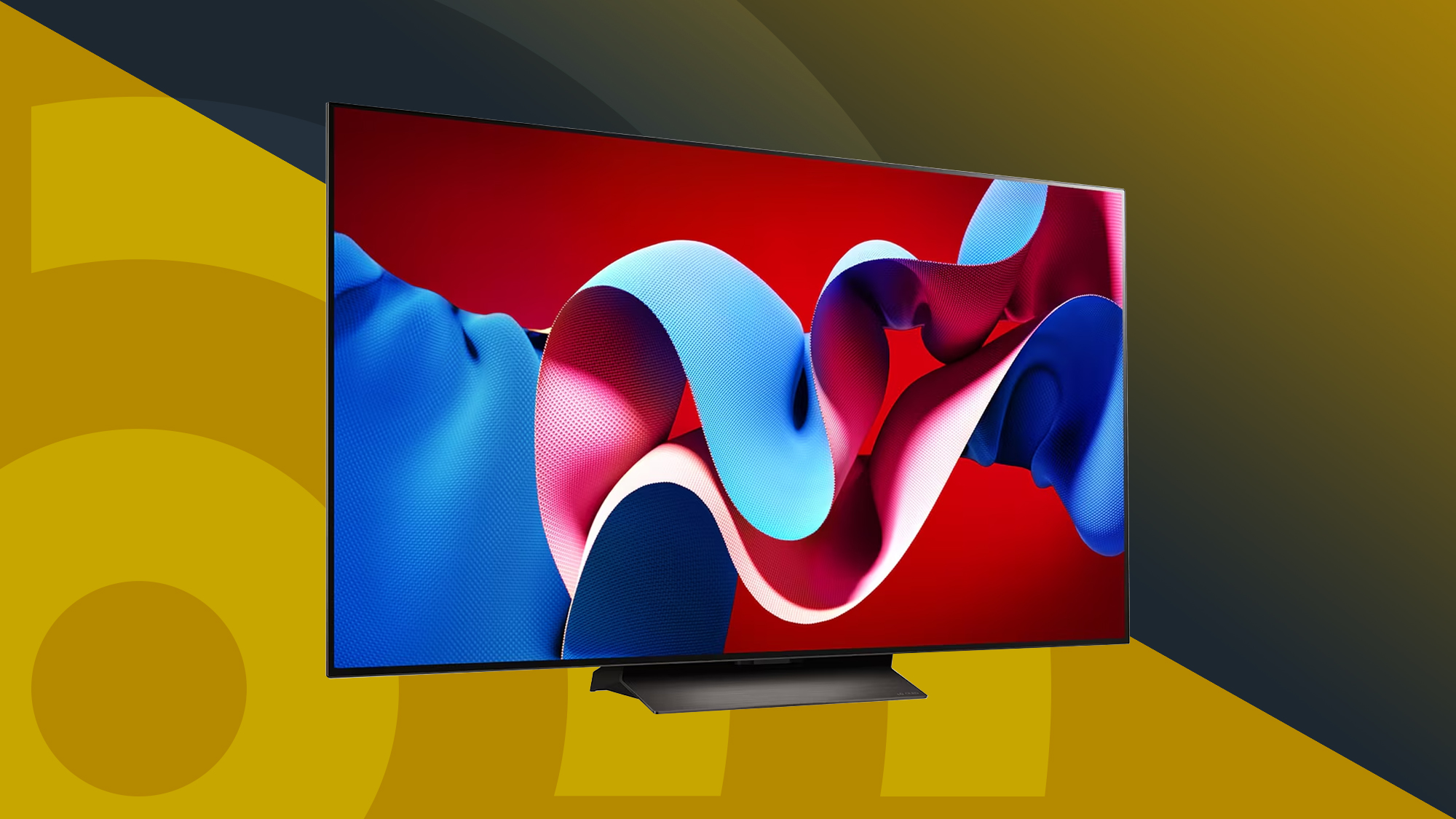
I’ve been testing and reviewing the best TVs for nearly 30 years and have witnessed massive shifts in technology from analog to digital, and from CRTs to flat-panel displays. TVs today are better than ever and can offer incredible value, and my vantage point as a longtime reviewer puts me in a perfect position to identify which models provide the best performance for the price. That perspective informs this guide, which ranks the best new TVs across a range of categories to help you find the best fit for your needs and budget.
My TV team and I have conducted hands-on reviews of the TVs in this guide using a process that includes objective measurements made with specialized test equipment. That measurement data is presented in the benchmark graphs that accompany each one of our TV reviews and is presented in the ‘In-depth analysis’ section for the entries in this guide.
A TV’s performance can’t be judged by measurements alone, however, so we also do an extensive subjective evaluation using reference movie scenes and TV, primarily on 4K Blu-ray and regular Blu-ray disc formats to ensure consistency during testing. You can read about the testing process I developed with my team in our full article on how we test TVs at TechRadar.
Whether you’re looking for a budget-priced QLED TV that offers great picture quality for the price, or a more premium OLED model that pushes the performance envelope and also has cutting-edge features for gaming, this guide has you covered. The latest TVs can sometimes get clouded in a swirl of jargon, so check out our glossary in the ‘How to choose’ section for descriptions of the tech terms used in this guide.
The quick list
Want the simplest guide to the best TVs around? Here's our quick menu of them – you can read more in-depth verdicts on each 4K TV by clicking the links on each one.
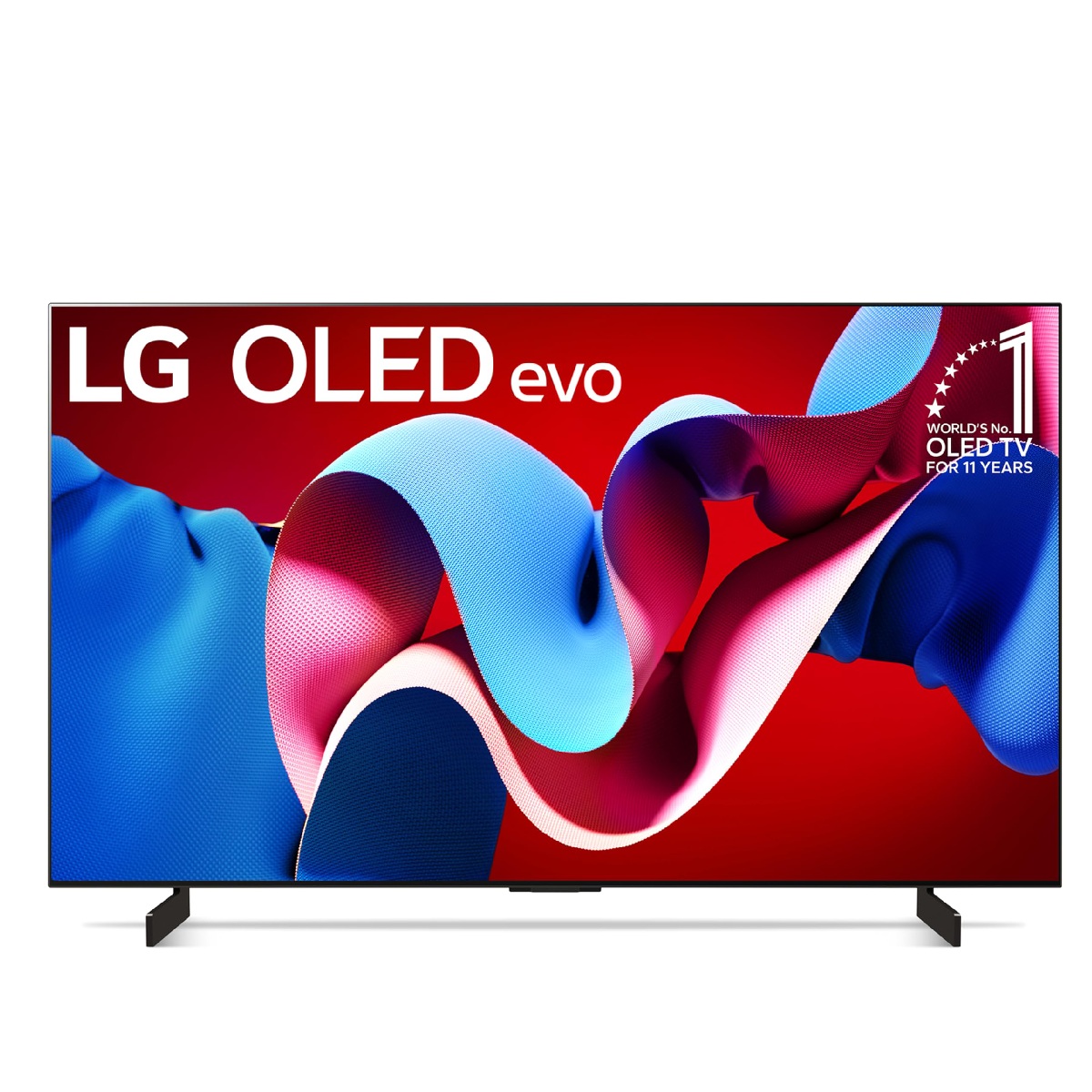
The best TV for most people
Available in sizes from 42 to 83 inches, with basically every gaming feature available and a top-tier smart TV platform, the LG C4 very nearly does it all and is a great all-rounder TV.

The best budget TV
A mini-LED backlight with full-array local dimming, 4K 120Hz gaming support, an easy to use smart interface, and an affordable price tag make the Roku Pro series a winner.
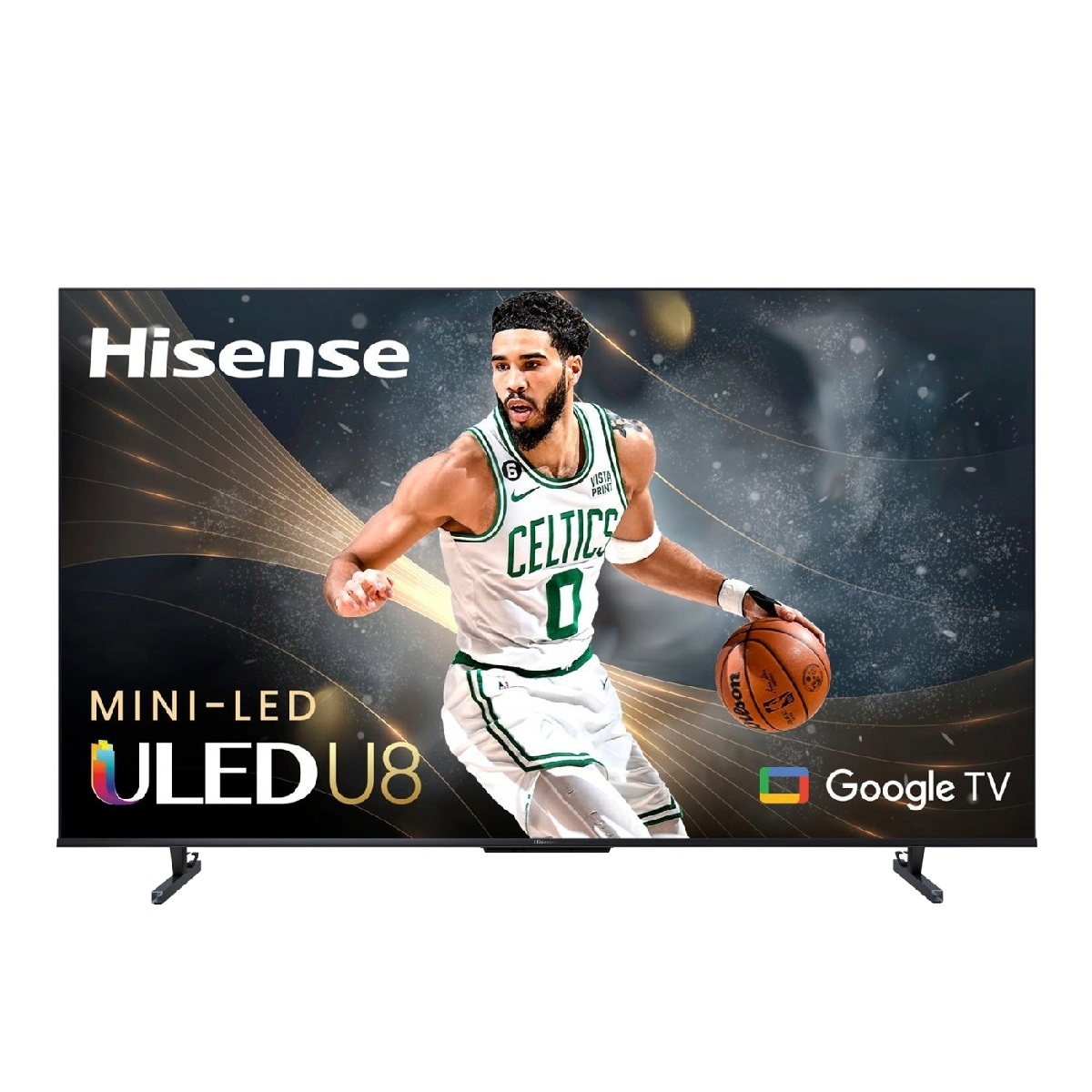
The best mid-range TV
Hisense's next-to-flagship U8N mini-LED TV offers high brightness with powerful local dimming and an anti-reflection screen, all for a mid-range price.
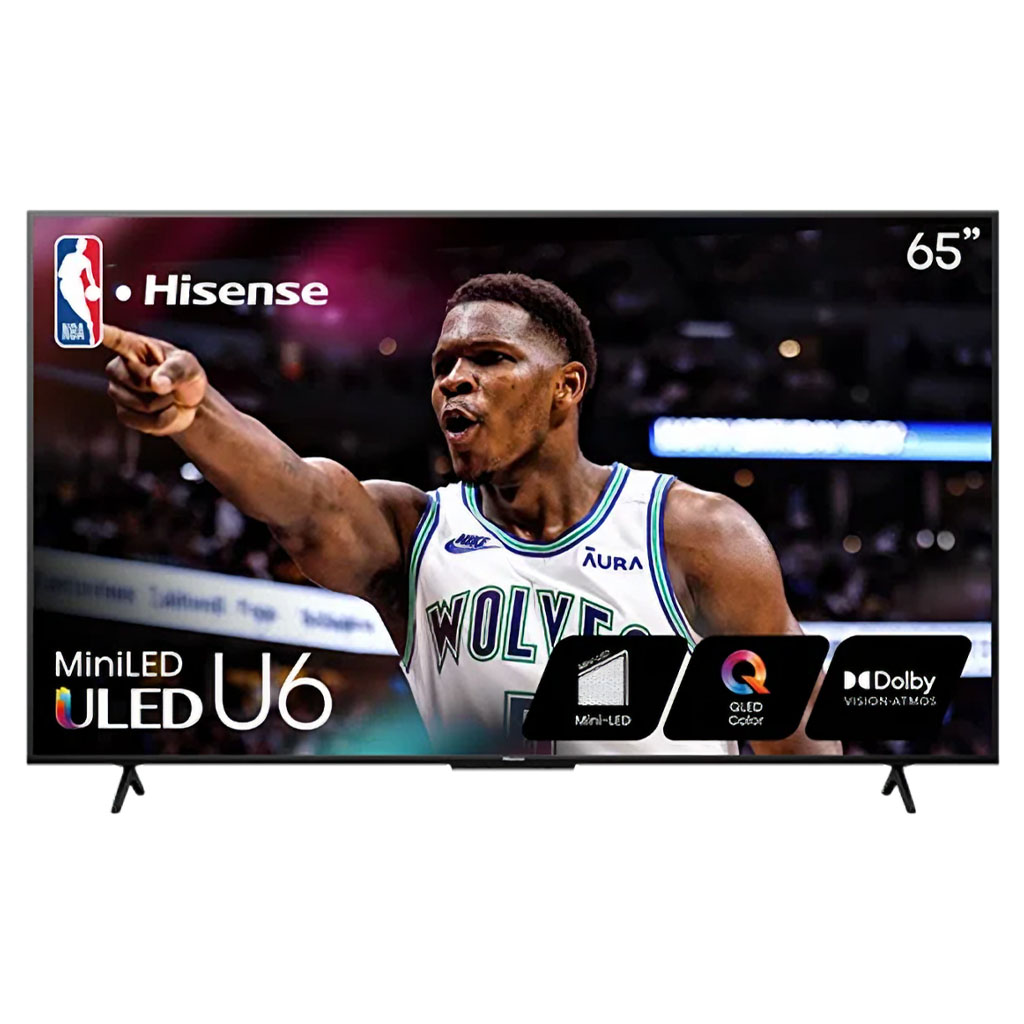
The best super-cheap big-screen TV
Hisense's cheapest mini-LED TV series is available in screen sizes up to 85 inches. It's not the best option for gaming and the sound is a bit thin, but the U6N's picture quality is impressive for the price.
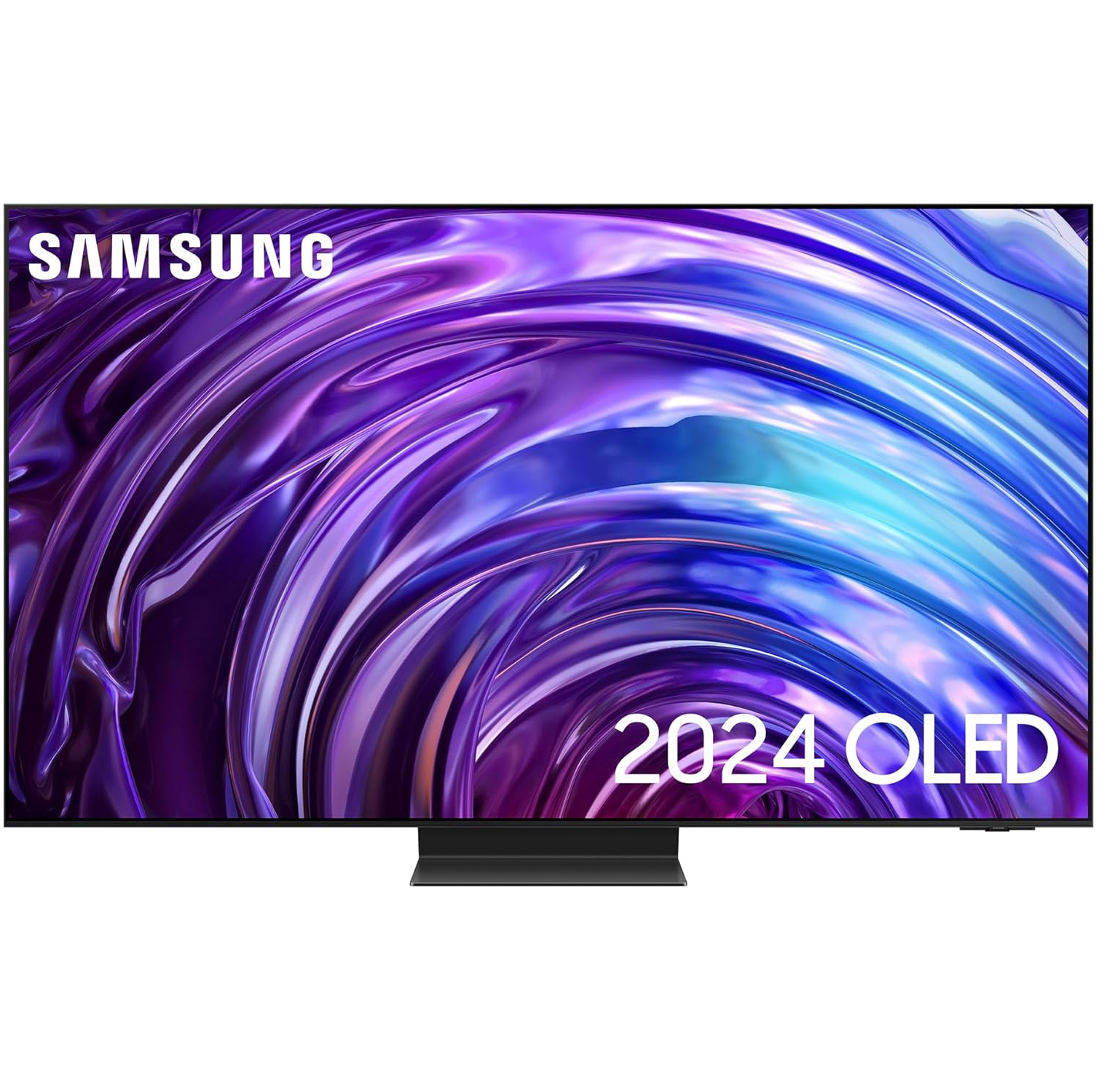
The best premium OLED TV
Combining record-high brightness for an OLED with an anti-reflective coating makes this the best OLED 4K TV you can buy. The slick design, great sound quality and superb gaming tech don't hurt, either.
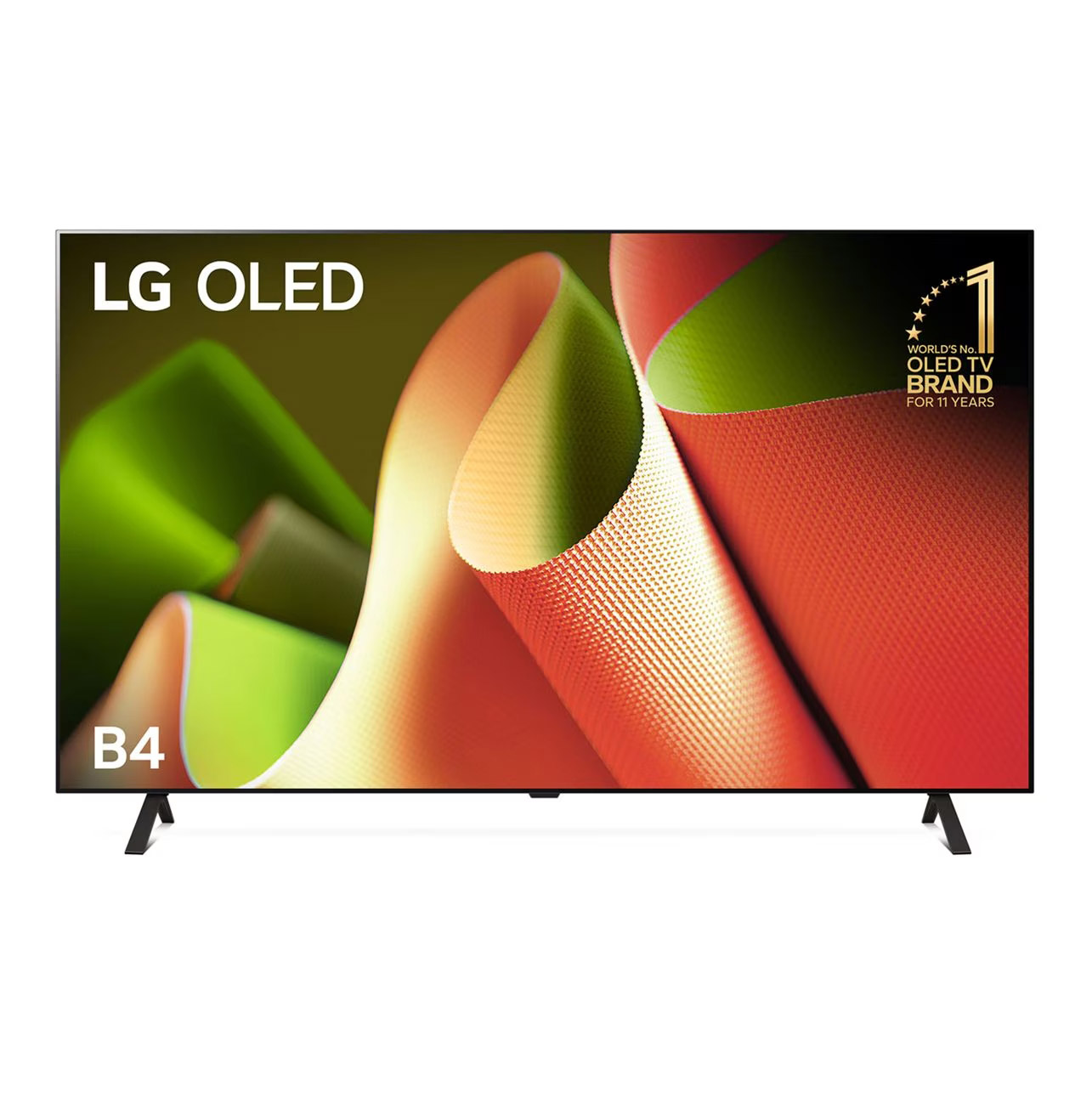
The best cheap OLED TV
The cheapest OLED TV you can buy in 2024 still delivers lovely pictures, next-gen gaming on all four HDMI ports, and great smart TV software. A great entry to what OLED can do.
Load the next products...
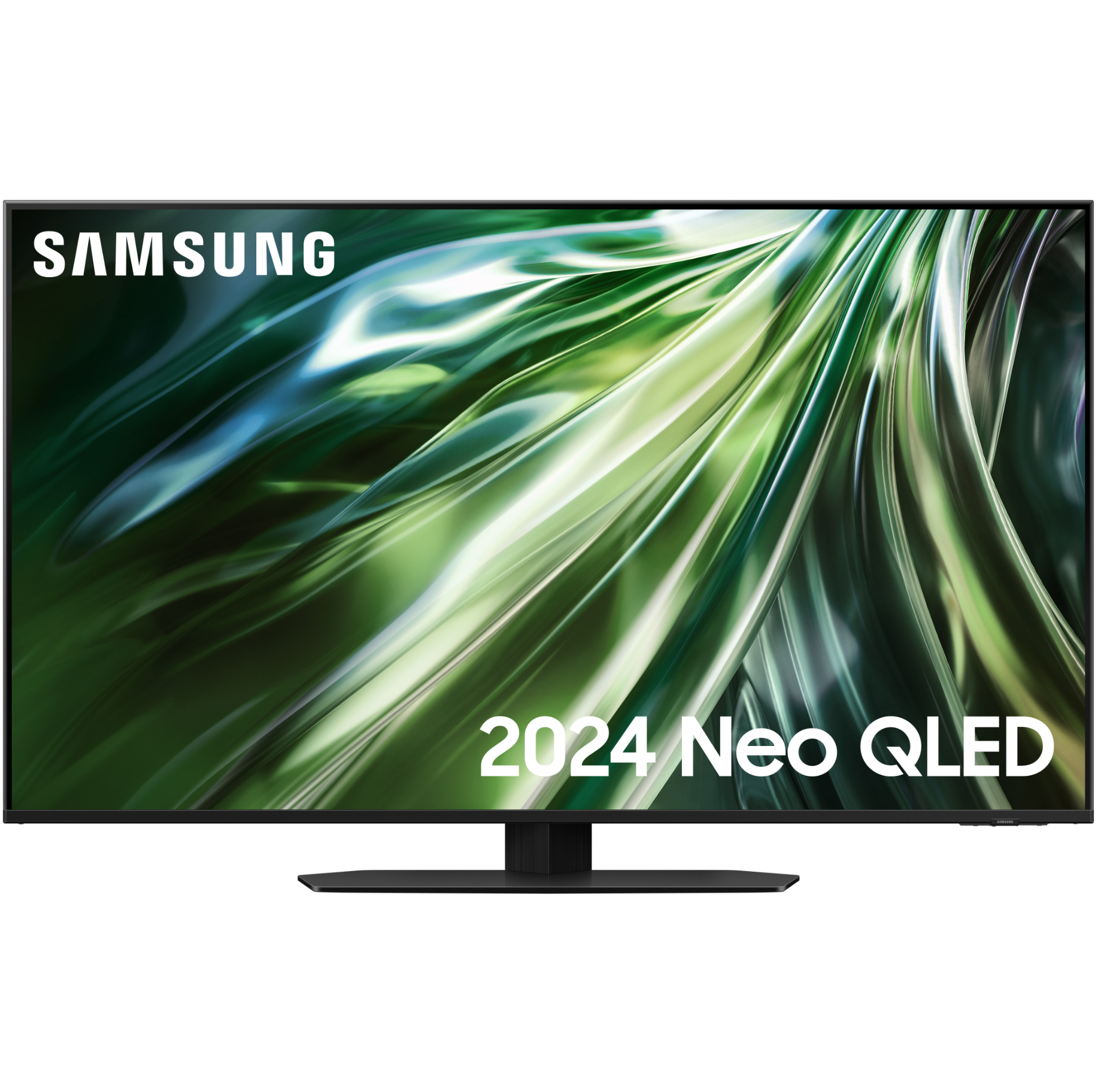
The best bright TV for daytime sports
This balances the right levels of brightness with superb motion handling to make it ideal for daytime sports viewing – it's excellent for gaming too.

The best TV for sound
Sony uses the whole screen of this OLED TV as a speaker, which means clearer, more precise and more impactful sound than the likes of the LG C4. It looks beautiful, too.

I lead TechRadar’s TV testing and also cover projectors, soundbars, and home theater audio. Previously, I was editor of Sound & Vision magazine, and I'm an ISF-trained TV calibrator. Having worked in AV product testing and tech journalism for almost three decades, I’ve had my eyes on basically every flagship TV available. I shaped this list with the help of our reviewers in addition to my own experience, to cover as many bases as possible for different budget or viewing needs.
Recent updates
April 1, 2025
Added Quick List for easier guide navigation.
The best TVs of 2025, listed
Why you can trust TechRadar
Below you'll find full write-ups for each of the best 4K TVs in our list. We've tested each one extensively, so you can be sure that our recommendations can be trusted.
The best TV for most people
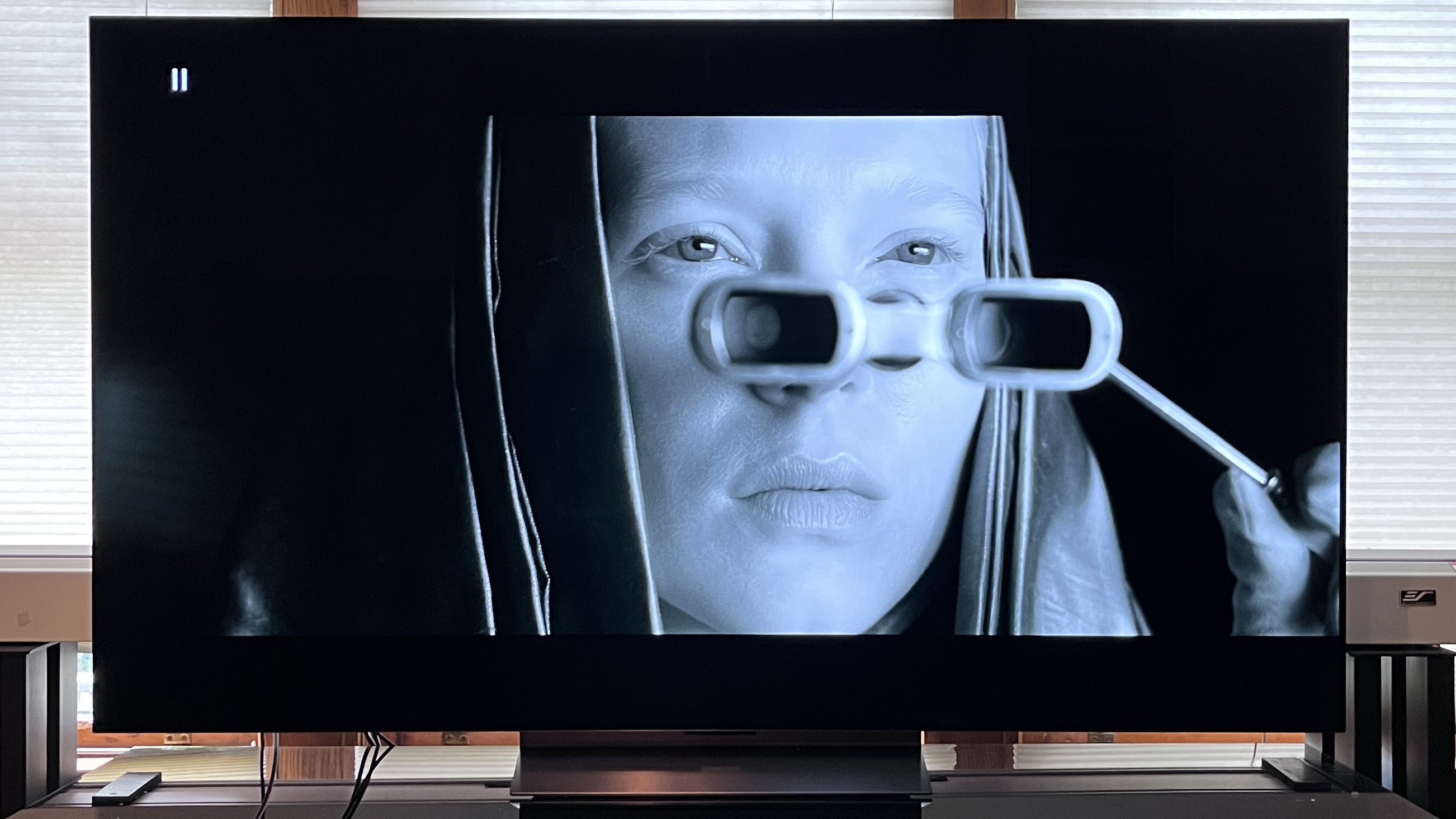
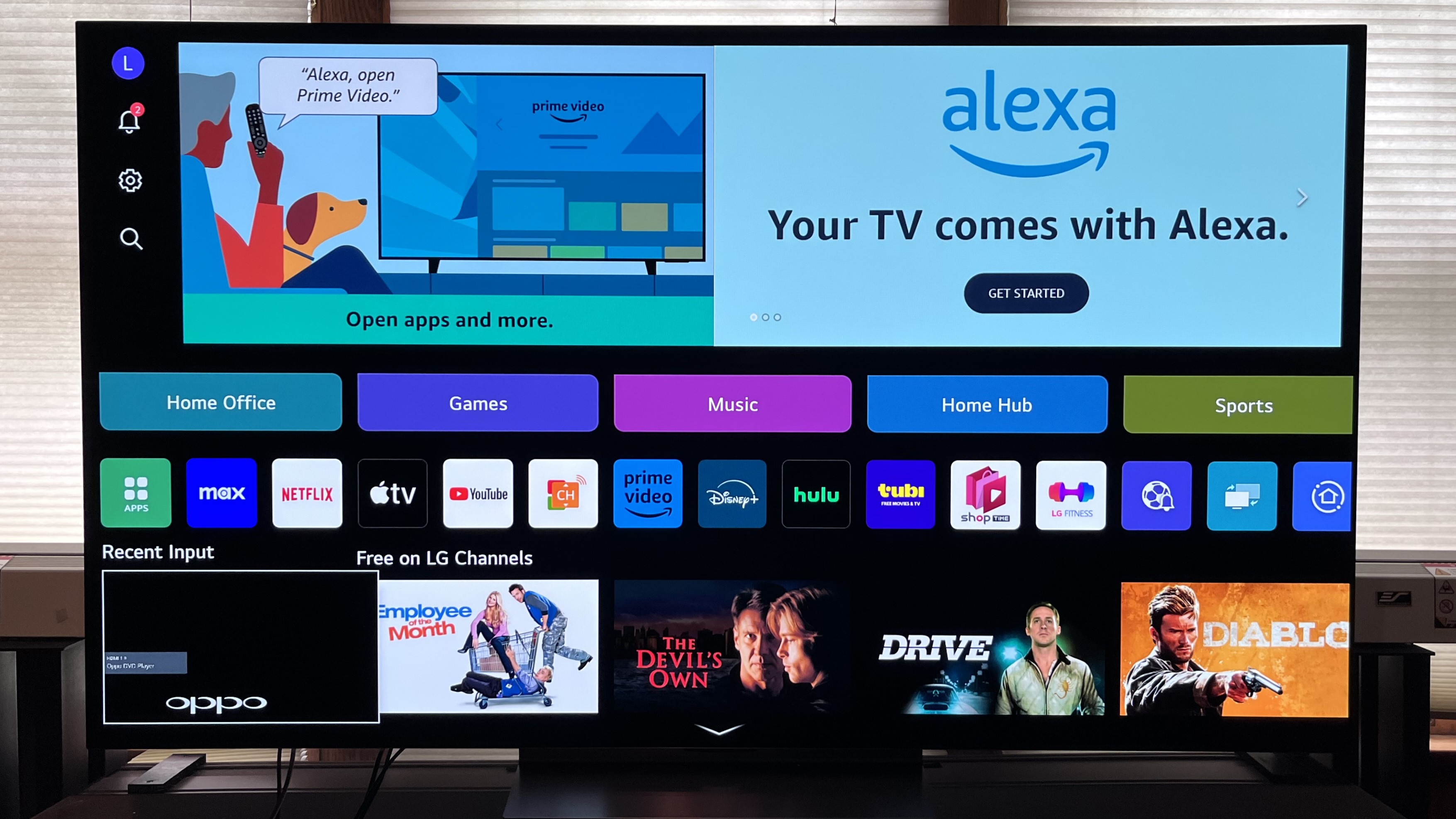
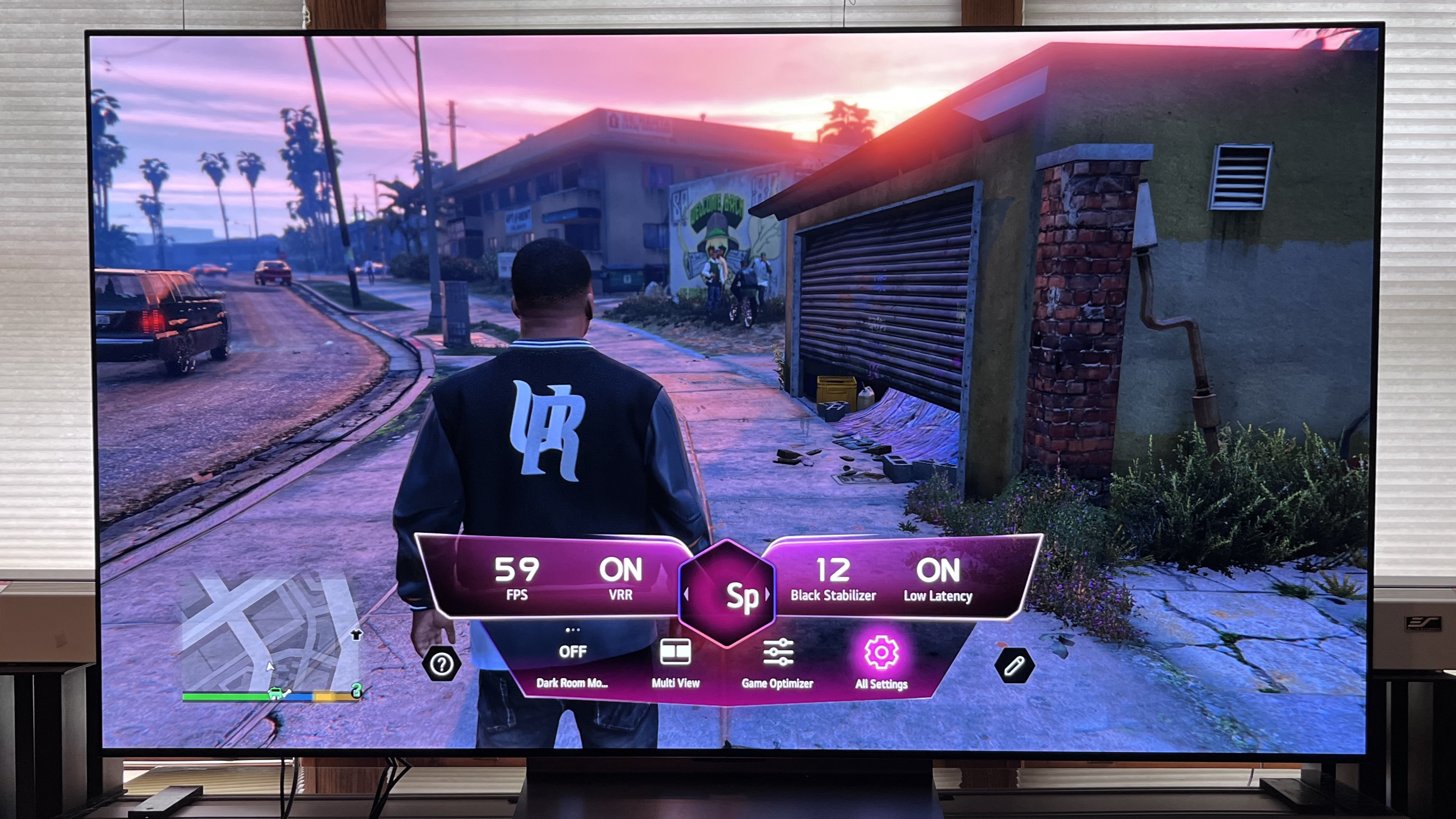
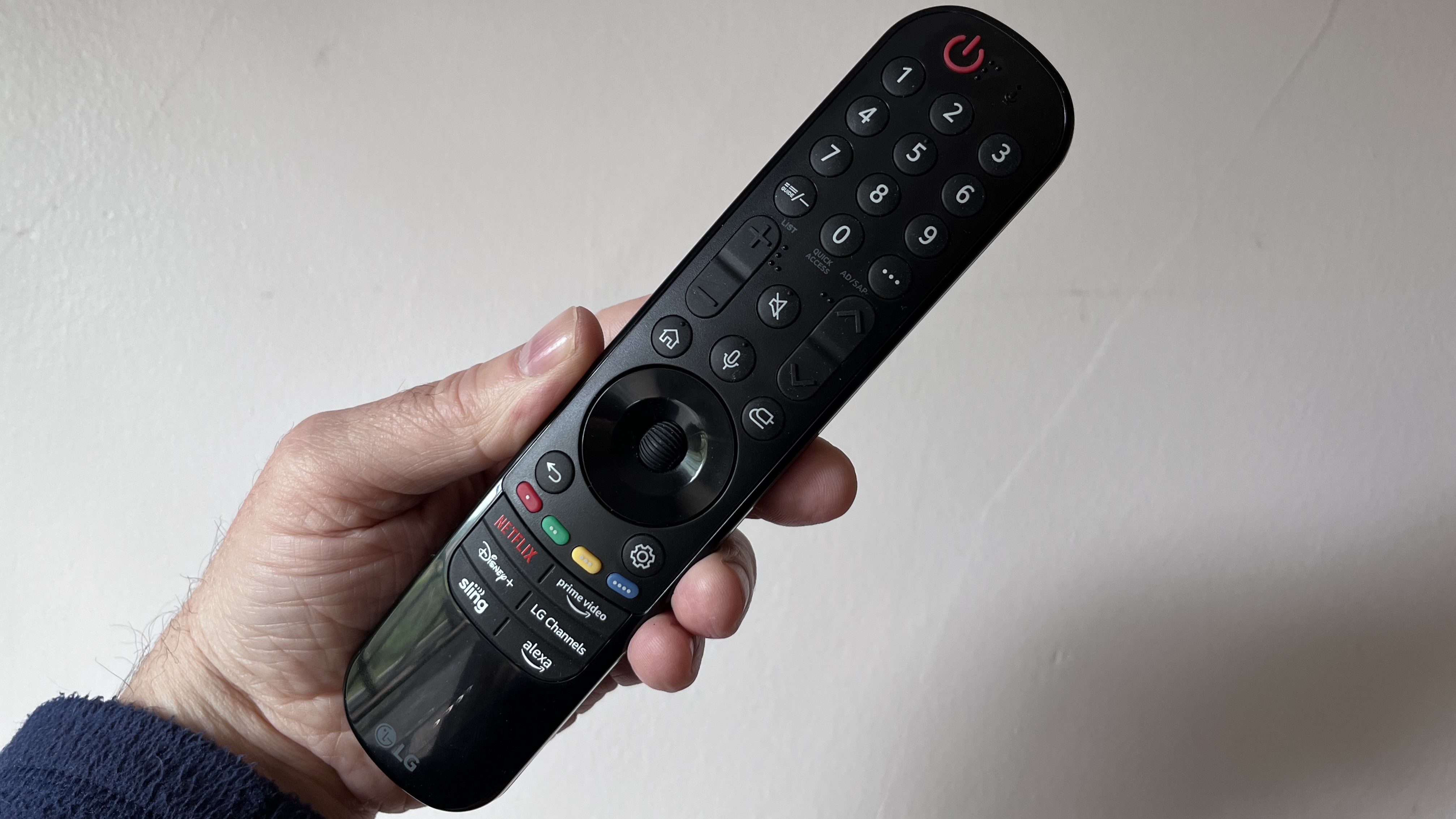
Specifications
1-minute summary: Having reviewed both the LG C4 and its LG C3 predecessor, I can confirm that LG’s new OLED TV is a solid upgrade and a great TV overall. The C4 features a new Alpha 9 AI Gen 7 processor that brings a noticeable boost in brightness, and it also improves detail and color in HDR sources. LG C4 OLEDs are well-equipped gaming TVs, with four HDMI ports that support 4K 120Hz (and up to 144Hz for PC gaming), VRR, and ALLM. A new Dolby Vision Filmmaker Mode preset gives you a director-approved picture out of the box and, with the C4 available in 42- up to 83-inch screens, there’s a C4 sized to fit any situation, from desktop gaming to high-end home theater. The C4 isn’t as bright as flagship OLED TVs such as the LG G4 and Samsung S95D, but its picture quality is almost as good, and you’ll pay far more for those models. It really hits a sweet spot, delivering on every front for a lower price than nearly every other OLED TV on the market, making it the best OLED TV for most people.
Read our full LG C4 review

Reasons to buy
✅ You want a reasonably priced OLED: The LG C4 strikes a perfect balance between performance, features, and value in an OLED TV.
✅ You want a great TV for movies: The C4 has excellent contrast, color and detail. Combined with its new Dolby Vision Filmmaker Mode, it’s an ideal TV for movies.
✅ You want a great TV for gaming: The C4 has four HDMI 2.1 ports and is packed with gaming features for console, PC, and cloud-based gaming.
Reasons to avoid
❌ You want great built-in audio: The C4’s built-in speakers are fine, but those wanting better bass and more immersive sound should check out the Sony Bravia 8 or Samsung S95D.
❌ You want the brightest TV available: LG’s C4 is brighter than its C3 predecessor, but it doesn’t match mini-LED TVs such as the Hisense U8N, or flagship OLED TVs such as the Samsung S95D.
❌ You want the cheapest OLED: LG’s entry-level B4 is the company’s cheapest OLED TV series, although it’s not as bright and isn’t available in as many sizes.
Show full expert analysis ▼
In-depth analysis

In use, the C4 delivers a picture that’s bright enough for viewing in rooms with moderate-to-high ambient light levels. I measured peak brightness on the LG C4 at 1,065 nits, a great number that puts it above most other rival mid-range OLED TVs. When watching in dim lighting conditions, its picture really pops to life, displaying rich color, deep blacks, and detailed shadows. Like other OLED TVs, the C4 looks good over a very wide viewing angle, so there’s never a bad seat in the house – a benefit when watching sports with a group.

The same Alpha 9 AI Gen 7 processor responsible for the C4’s picture-quality boost over the C3 also improves sound by upmixing audio for a virtual 9.1.2-channel Dolby Atmos presentation. When I reviewed the C4, I found the dialogue in TV shows and movie soundtracks to be consistently clear, and there was a good sense of spaciousness with the AI Sound Pro mode active. As with most TVs, bass was on the light side, so if you want cinematic sound it will be best to add a good soundbar. The C4 provides several features designed to work exclusively with LG soundbars, including Wow Cast, which wirelessly transmits Dolby Atmos audio from the TV to the soundbar, and Wow Orchestra, which syncs up the speakers in the TV and the soundbar for enhanced audio presentation.

The new webOS 24 smart interface on the C4 has been updated for a more streamlined look. A main feature is Quick Cards, which lets you store apps and settings in various categories including Games, Music, Home Hub, Sports, and Home Office. Content recommendations are located below these, though, like on other smart TV interfaces, they routinely push you toward a free ad-supported TV portal (LG Channels, in this case). LG’s Magic Remote makes navigating everything easy, and a new Quick Menus provides easy access to picture and sound settings.

The LG C4 is a powerhouse TV for gaming. Its four HDMI 2.1 ports support 4K 120Hz, Nvidia G Sync and AMD FreeSync, and Dolby Vision gaming, and it’s one of the first TVs to be 144Hz certified by Nvidia. Similar to Samsung TVs, the C4 has cloud-gaming options, with Nvidia GeForce Now, Amazon Luna, Utomik and other services supported. A Game Optimizer mode is automatically enabled when a gaming console is connected, reducing input lag as low as 9.2ms and providing a convenient pop-up game menu for making quick gaming-related adjustments.

The 55-inch version of the LG C4 is now available for around $1,399, making it a very good value. You’ll pay nearly twice that amount for more flagship OLED TVs in that screen size from LG, Samsung, and Sony, and the picture quality advantages of those premium models, while real, aren’t something that most viewers will miss. LG’s C-Series OLED TVs have long represented a sweet spot for OLED TVs, and the C4 carries on that tradition.
LG C4 test results
The best budget TV
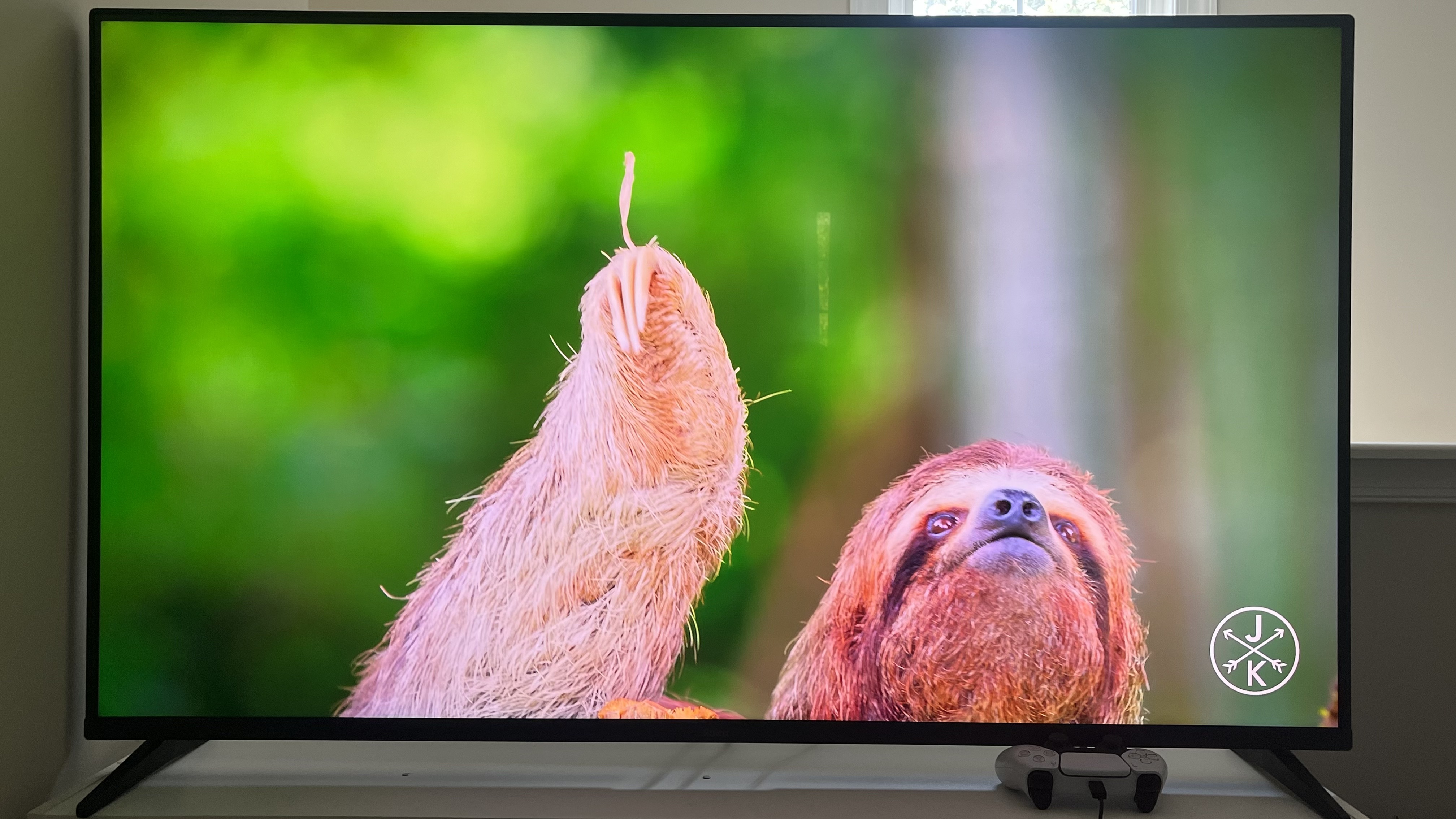
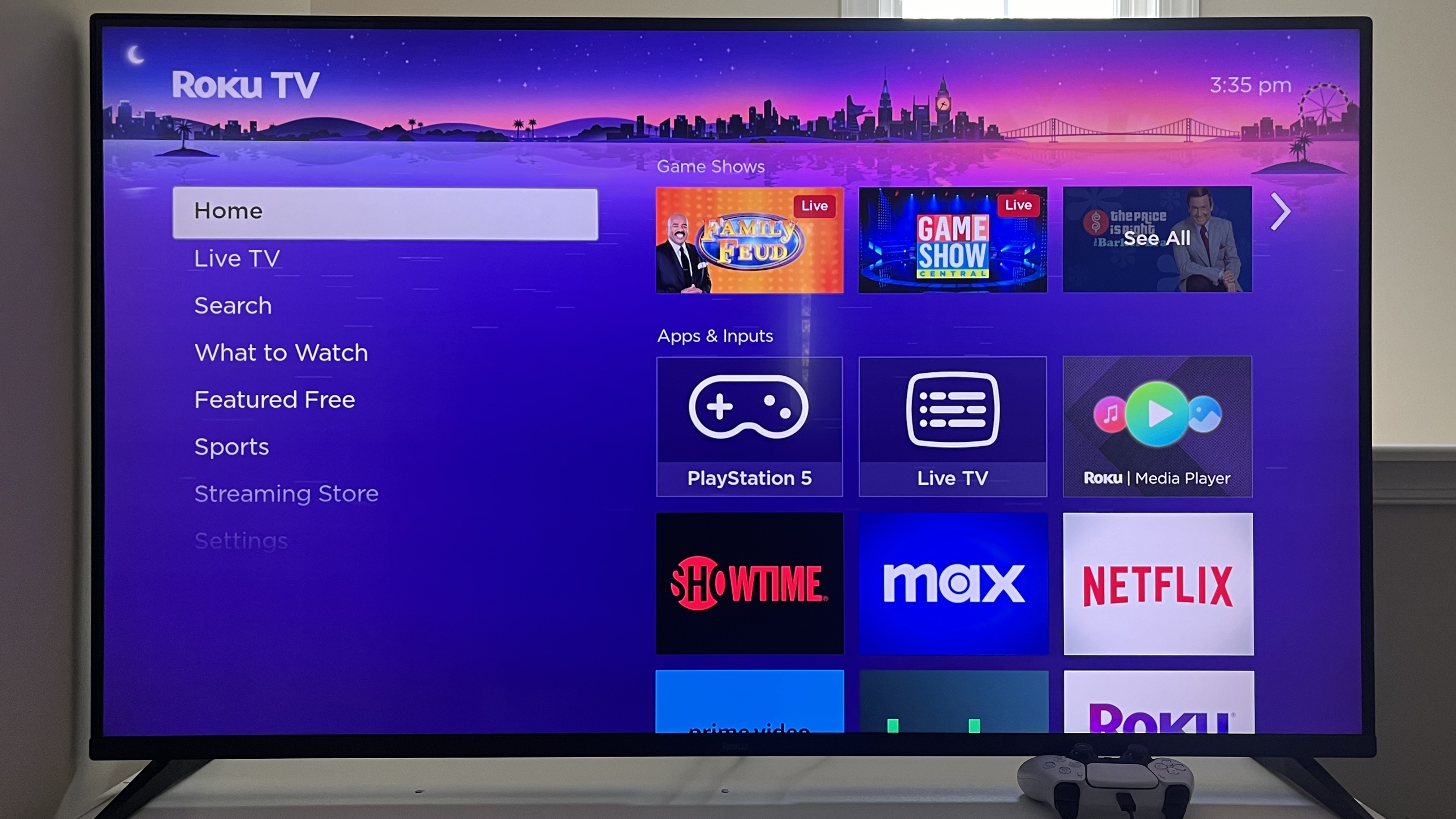
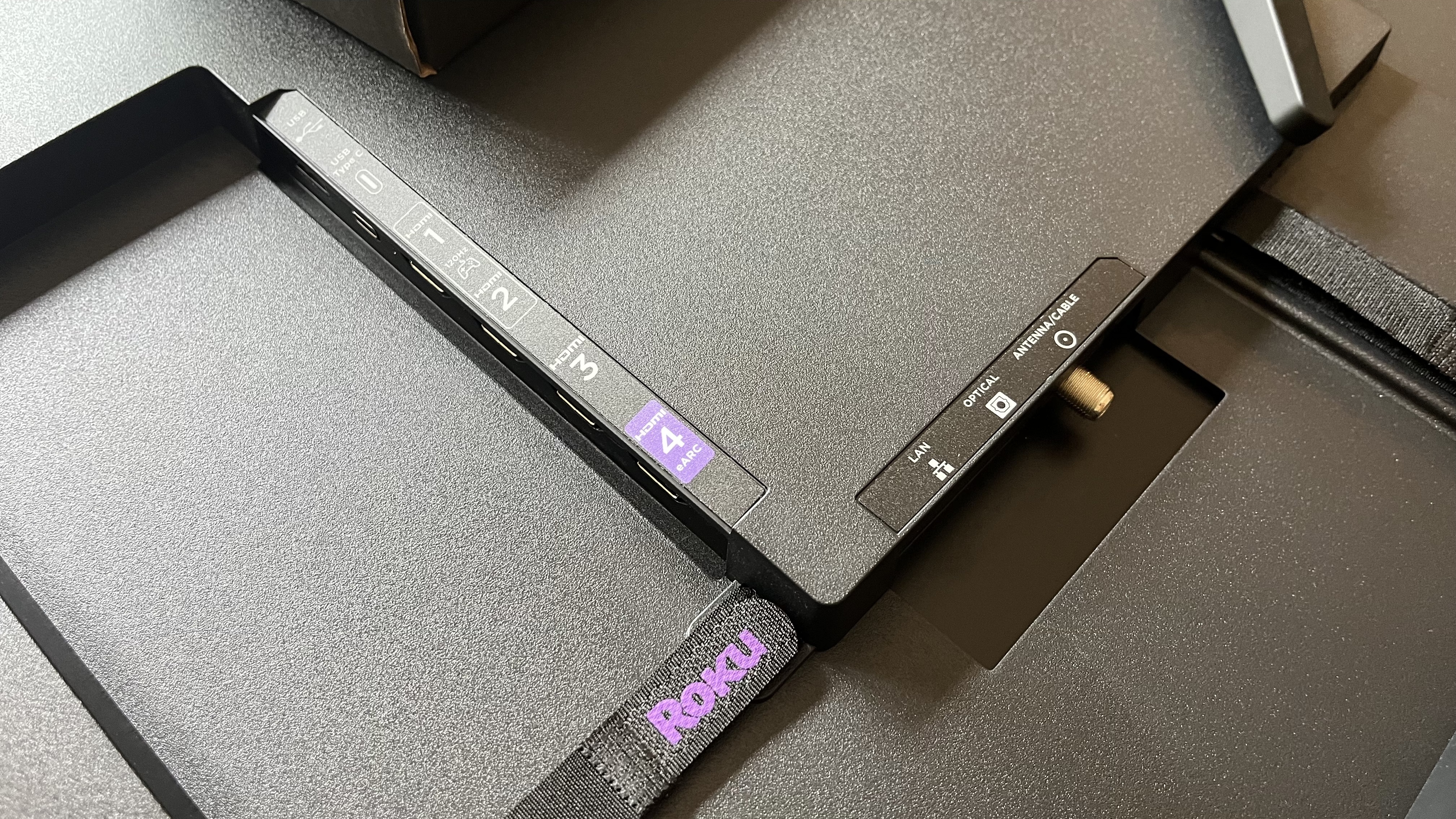
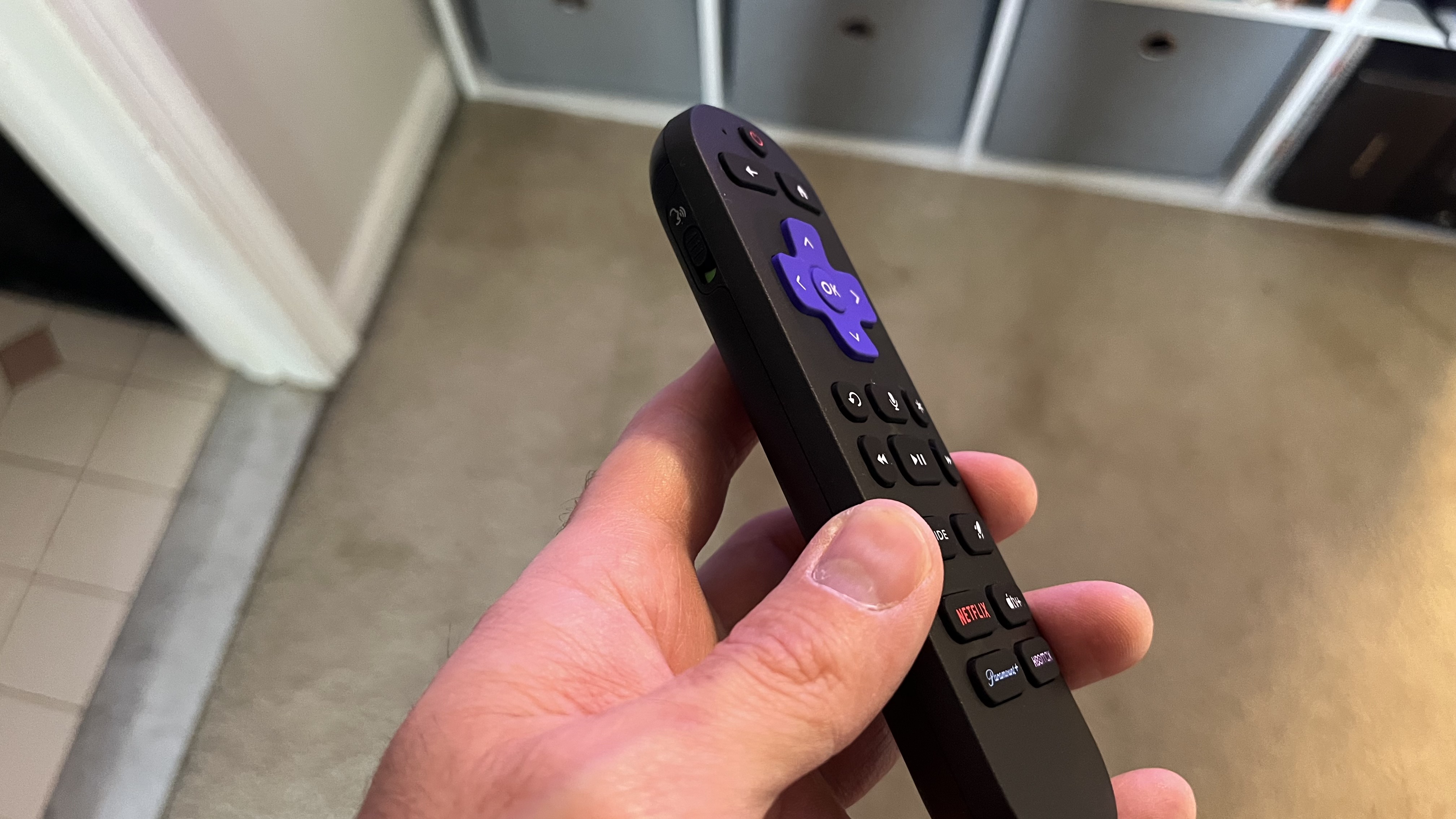
Specifications
1-minute summary: The Roku Plus and Select series were the company’s first Roku-branded TVs, and while good, the Pro series was the budget TV home run I was waiting on. Starting at $899 for a 55-inch model, with 65- and 75-inch screen sizes also available, Roku Pro Series TVs step up with mini-LED backlight tech for a significantly brighter picture than you’ll get in the mid-range Roku select series. Otherwise, the Roku Pro’s picture is mostly free of the backlight blooming you see on some other budget mini-LED and regular LED TVs and it has comprehensive HDR support (including Dolby Vision and HDR10+ formats) plus a Smart Picture Max automatic mode that lets the TV do all the picture setup work for you and adapts dynamically for different content. It’s well-equipped for gaming with two HDMI 2.1 ports supporting 4K 120Hz input along with VRR (with FreeSync) and ALLM and its side-mounted speakers deliver much better-than-average sound for a budget TV. Of course, being a Roku TV it has the famous Roku interface, which I think leapfrogs over other smart TV screens when it comes to ease of navigation.
Read our full Roku Pro series review

Reasons to buy
✅ You want a premium TV without the price tag: The Roku Pro Series is a great value considering it is the most premium offering in the company’s TV lineup.
✅ You want to wall-mount your TV: Although it can be installed on a stand, Pro series TVs are designed to be wall-mounted and have a neat shadowbox case that makes it look like a framed painting.
✅ You want an affordable TV with great built-in sound: The Pro Series was designed to be used without a soundbar, and its front-firing speakers provide reasonably full sound and can play loud.
Reasons to avoid
❌ You want the brightest possible picture: Although picture quality on Pro series TVs is generally very good, the Hisense U8N offers superior brightness and better overall performance.
❌ You want a sophisticated smart platform: The Roku smart TV interface is basic compared to other smart TV platforms. For some, that’s a benefit because it's so easy to use, but others may want a more sophisticated smart interface.
❌ You want the best gaming TV: While the Roku Pro Series offers a strong suite of gaming features, it's limited to two 4K 120Hz ports. Samsung and LG options on this list offer more flexibility and features.
Show full expert analysis ▼
In-depth analysis

The 55-inch Roku Pro series TV we tested offers above-average brightness for a more budget-focused set – we measured around 900 nits peak brightness on a 10% window pattern and over 400 nits on a fullscreen pattern. While those are far from the most impressive numbers we’ve seen on a mini-LED TV, they compare well to competition at the same kind of official price. The Pro series also has excellent color performance and, as we noted in our review, we “didn’t experience any backlight blooming thanks to the TV’s well-implemented local dimming.” Its picture also shone with sports, partly because of its above-average brightness for a budget TV, but also because of the very good motion handling provided by its native 120Hz QLED display panel.

A benefit of the Pro series’ sturdy “shadowbox” frame, which is slighty thicker than normal and was designed to accommodate a wall-mount installation, is that there’s space for side-mounted speakers – a configuration that allows for better audio clarity than the bottom-mounted speakers on most budget TVs. In our review, we found that there was “plenty of volume on tap” and that you could even get away with not using a soundbar. Which brings up another Pro series benefit: the TV can be wirelessly paired with the company’s wireless soundbars, subwoofers, and surround speakers.

Roku made its name with streaming devices featuring an intuitive, simple-to-navigate onscreen interface, and that same smart interface is provided on Pro series TVs. Along with providing easy access to your favorite streaming apps, picture and sound settings can be quickly accessed by pressing the star button on the Pro’s remote control, which also has a built-in mic for voice commands. Roku had also promised a new feature called Roku Backdrops that’s similar to the “ambient” artwork display modes on other smart TVs, though that feature has yet to materialize.

Gaming support on the Pro series is surprisingly robust for a budget TV. It has two HDMI inputs with 4K 120Hz, VRR (with FreeSync), and ALLM support. Input lag in the TV’s game mode is a low 9.4ms, which is the type of performance we see in the best gaming TVs. The Pro series automatically switches to its game picture mode when a gaming console is connected and turned on, and the contrast-rich picture quality also extends to gaming, making it easy to see details in the darker parts of the screen.

There are good reasons why the Roku Pro Series is selected as the best budget TV pick in our guide. For less than $900 for the 55-inch model, you’re getting a TV with a bright mini-LED backlight, impressive picture quality and gaming performance, very good built-in sound, great gaming performance and features, and one of the best smart TV interfaces in the biz. And with major sales events now a regular occurrence, you can expect to pay much less than that if you keep your eyes open.
Roku Pro series test results
The best mid-range TV
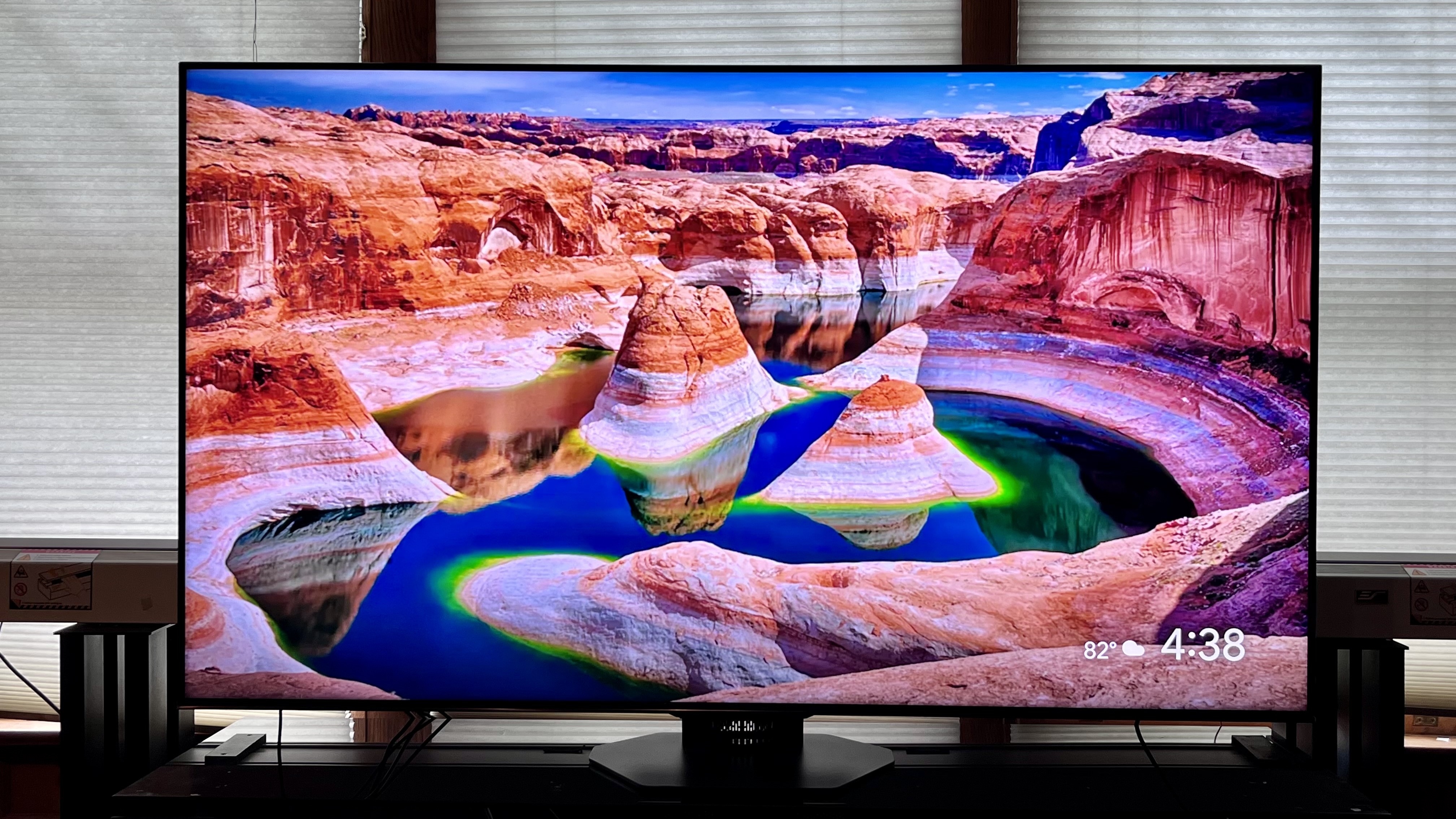
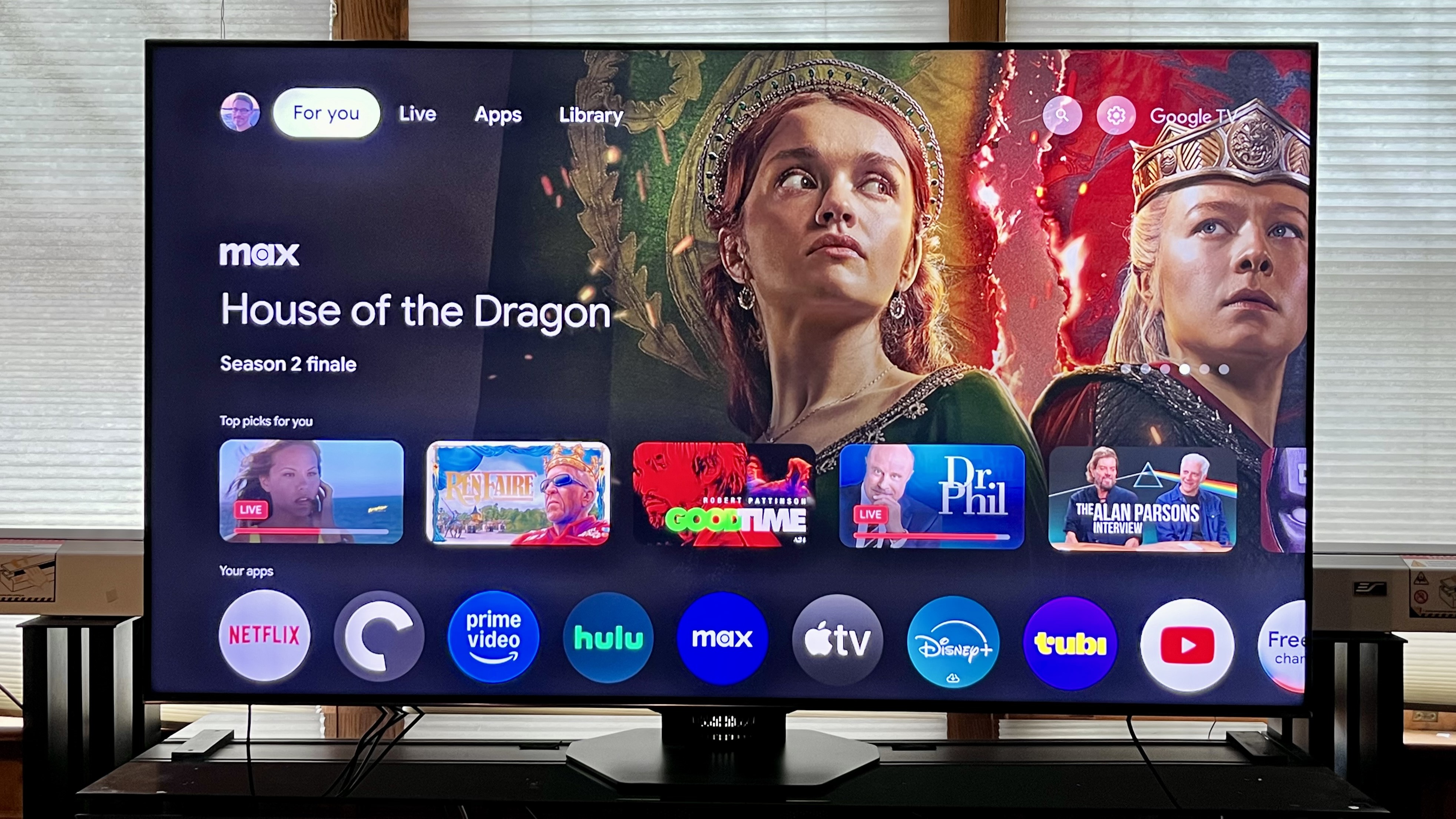
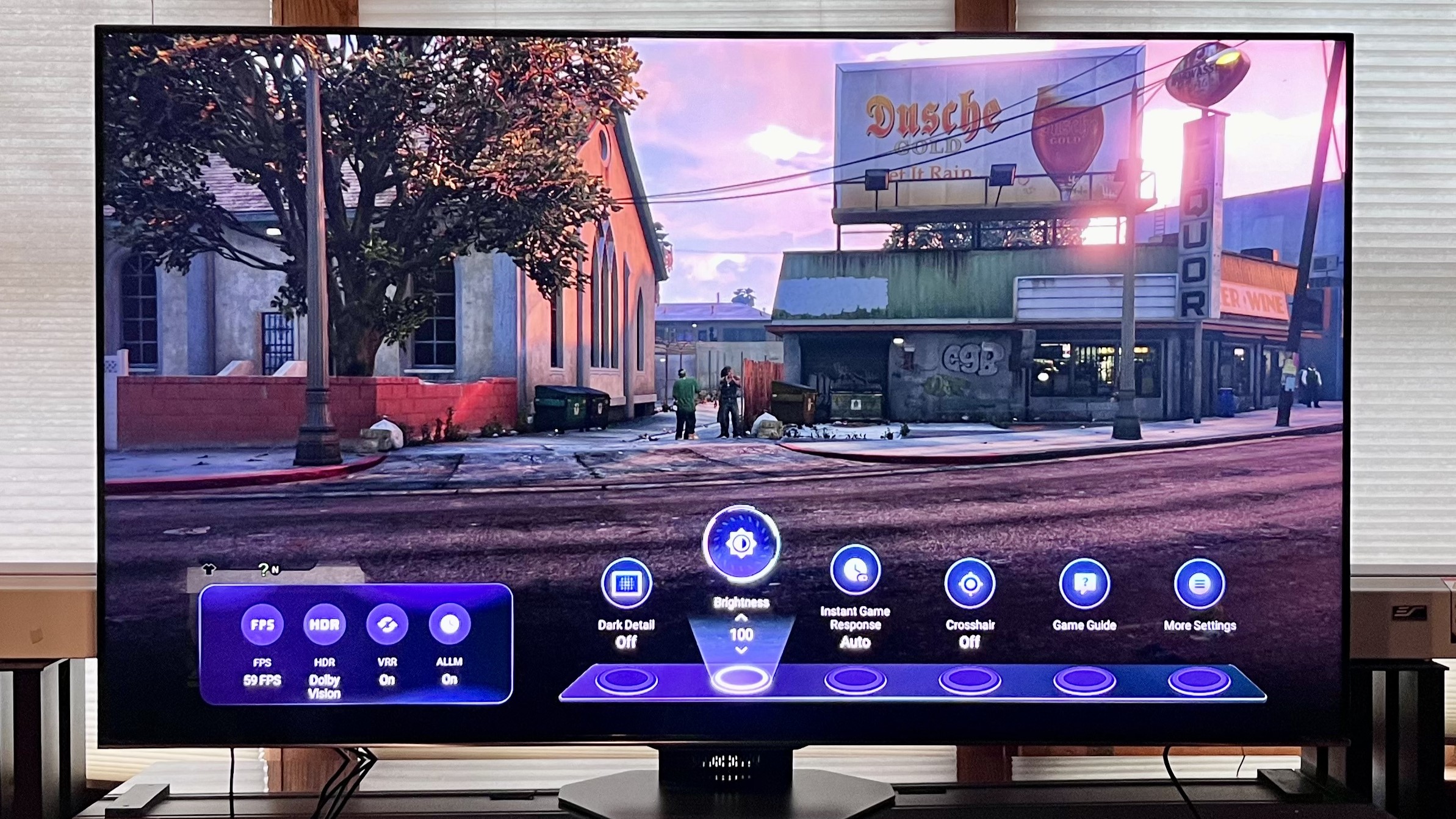
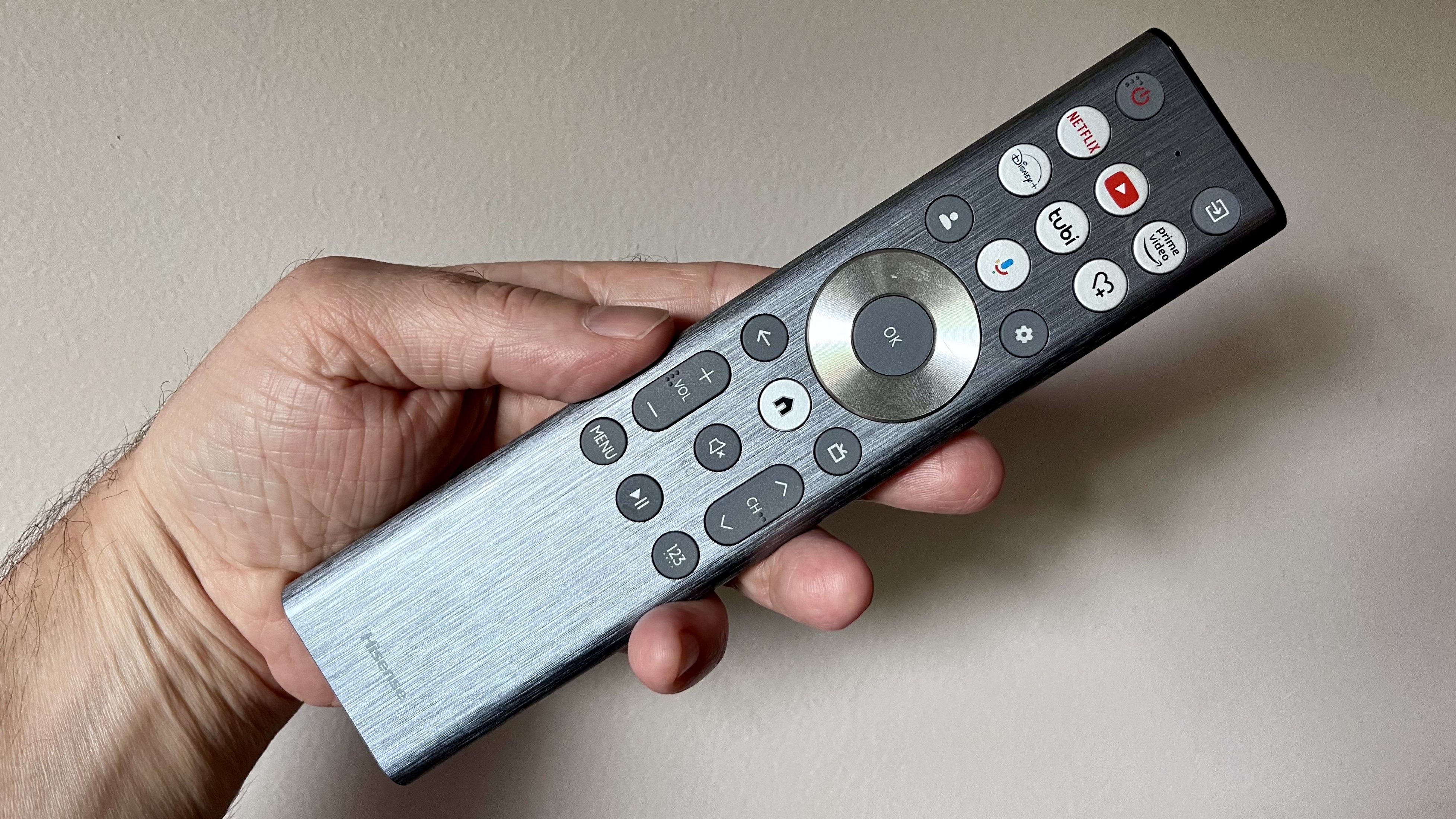
Specifications
1-minute summary: Hisense’s U8 series TVs get better with each passing year, and the latest U8N models are its best yet. When I reviewed the 65-inch version of the U8N, which is available in screen sizes from 55 to 98 inches, I found it had significantly higher brightness than last year’s U8K series model. The U8N offers comprehensive HDR support, with Dolby Vision, HDR10+, and HLG all accounted for, and movies and TV shows in those formats look spectacularly good, in my experience. Its bright picture also makes the U8N great for sports viewing, which is helped by an anti-reflection screen to combat glare from overhead lights. The U8N’s 2.1.2-channel speakers deliver powerful sound with good dialogue clarity and bass, and there’s support for both Dolby Atmos and DTS:X soundtrack formats. Hisense uses the serviceable Google TV smart interface for streaming, and there are plenty of menu adjustments for tweaking picture and sound. Last but not least, the U8N is a very capable gaming TV, with two HDMI 2.1 ports that support 4K 120Hz, VRR up to 144Hz (including FreeSync Premium Pro), ALLM, and Dolby Vision 4K gaming.
Read our full Hisense U8N review

Reasons to buy
✅ You want a great TV for watching movies: The U8N’s high brightness and refined local dimming bring out the best in movies, especially 4K ones with HDR.
✅ You want comprehensive HDR support: Support for Dolby Vision and HDR10+ is provided on the U8N, and it also has an ATSC 3.0 tuner for broadcast HDR.
✅ You want an affordable, high-end mini-LED TV: It lacks some amenities found on more premium mini-LED TVs, but overall the U8N provides excellent performance and features for the price.
Reasons to avoid
❌ You like to watch with a crowd: An area where the U8N pales – literally – against the Samsung QN90D is off-center viewing, with contrast and color saturation fading when its picture is viewed from far off-center seats.
❌ You don’t like adjusting the picture: In my testing, I found that the U8N required some careful adjustment to perform its best, though its picture was mostly fine out of the box.
❌ You don’t want to sign in to Google: A Google account sign-in is required to download apps to the U8N’s Google TV, so if you’re wary of having your data tracked by Google, it won’t be the best choice for you.
Show full expert analysis ▼
In-depth analysis

The U8N one of brightest TVs we’ve yet tested – when I measured the U8N, an HDR white window pattern covering 10% of the screen measured 2,851 nits, and a full-screen pattern yielded 805 nits, which are astoundingly high figures compared to previous TVs. But brightness is only one part of the picture quality equation, and Hisense’s TV also has refined local dimming for deep and detailed blacks. Not everything is perfect with the picture, with the main shortcoming being the noticeable color and contrast fade when viewing from far off-center seats, but when viewed straight on, the Hisense’s performance rivals TVs that cost substantially more when it comes to color reproduction, dynamic range, and natural sharpness.

The U8N’s built-in 2.1.2-channel audio system features upfiring speakers to deliver height effects in Dolby Atmos and DTS:X soundtracks. When watching movies, the U8N has clear dialogue and a good sense of spaciousness, and the sound can go impressively loud without any strain. Bass is also quite good for a TV’s built-in sound. We normally suggest adding a soundbar to any TV, but as I said in my U8N review, plenty of people will be happy with the U8N’s built-in speakers.

The U8N uses Google TV as its smart TV system, and it’s a reliable and generally easy-to-navigate option. One drawback is that a Google account is required to download apps beyond the handful provided by default on the home screen, but if you do sign in, Google will make personalized content recommendations based on your viewing and web browsing history rather than generating random ones. There are multiple ways to access picture and sound settings in the U8N’s menus, including a pop-up scrolling horizontal bar at the bottom of the screen that can be customized for quick access to frequently used adjustments. An onscreen Live TV guide displays free streaming channels in a cable TV-like grid format, and it can also be populated with broadcast channels pulled in by the U8N’s ATSC 3.0 “next-gen TV” tuner.

The U8N is a capable gaming TV, offering two HDMI 2.1 ports with support for 4K 120Hz, VRR up to 144Hz (including FreeSync Premium Pro), ALLM, and Dolby Vision 4K gaming. A pop-up game bar menu can be accessed when in game mode, which gives you quick access to gaming-related settings. I measured input lag on the U8N at a perfectly respectable 13.1ms – comfortably within the limit of 15ms that serious gamers expect to see.

At $1,499 for the 65-inch model I tested, the U8N is a great value. It’s regularly on sale for less than that amount, which almost seems like a steal given this TV’s impressive performance and features. The main TV that it competes with is the equally good TCL QM851G, which offers a similar level of performance and features and is usually priced around the same. The TCL is only available in 65-inch to 98-inch screen sizes, however, while the Hisense U8N also has a 55-inch option – really, you could buy whichever of these TVs is cheaper at any given moment, and their price competition with each other is only going to mean incredibly good prices for you.
Hisense U8N test results
The best TV for cheap big-screen thrills
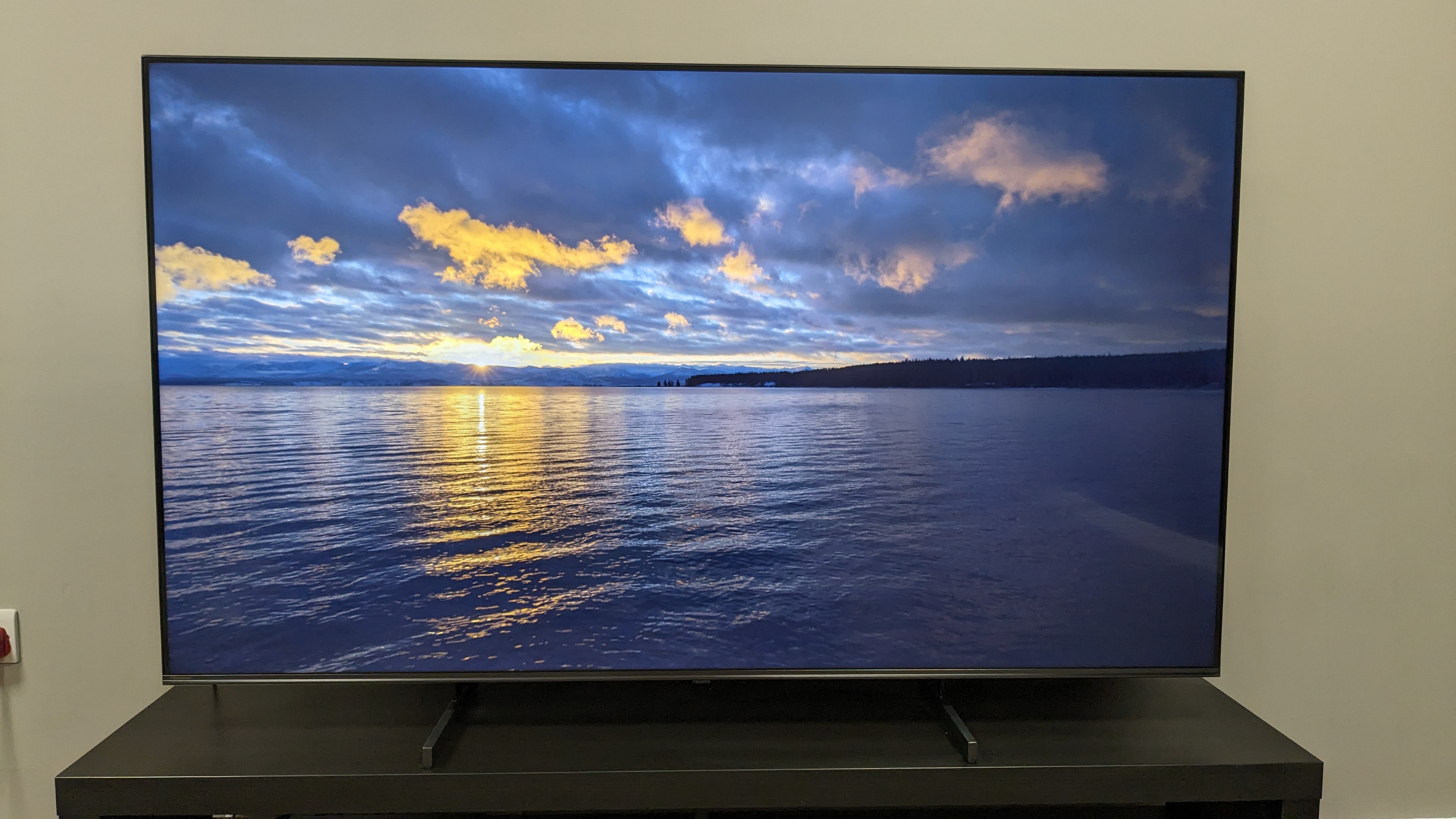

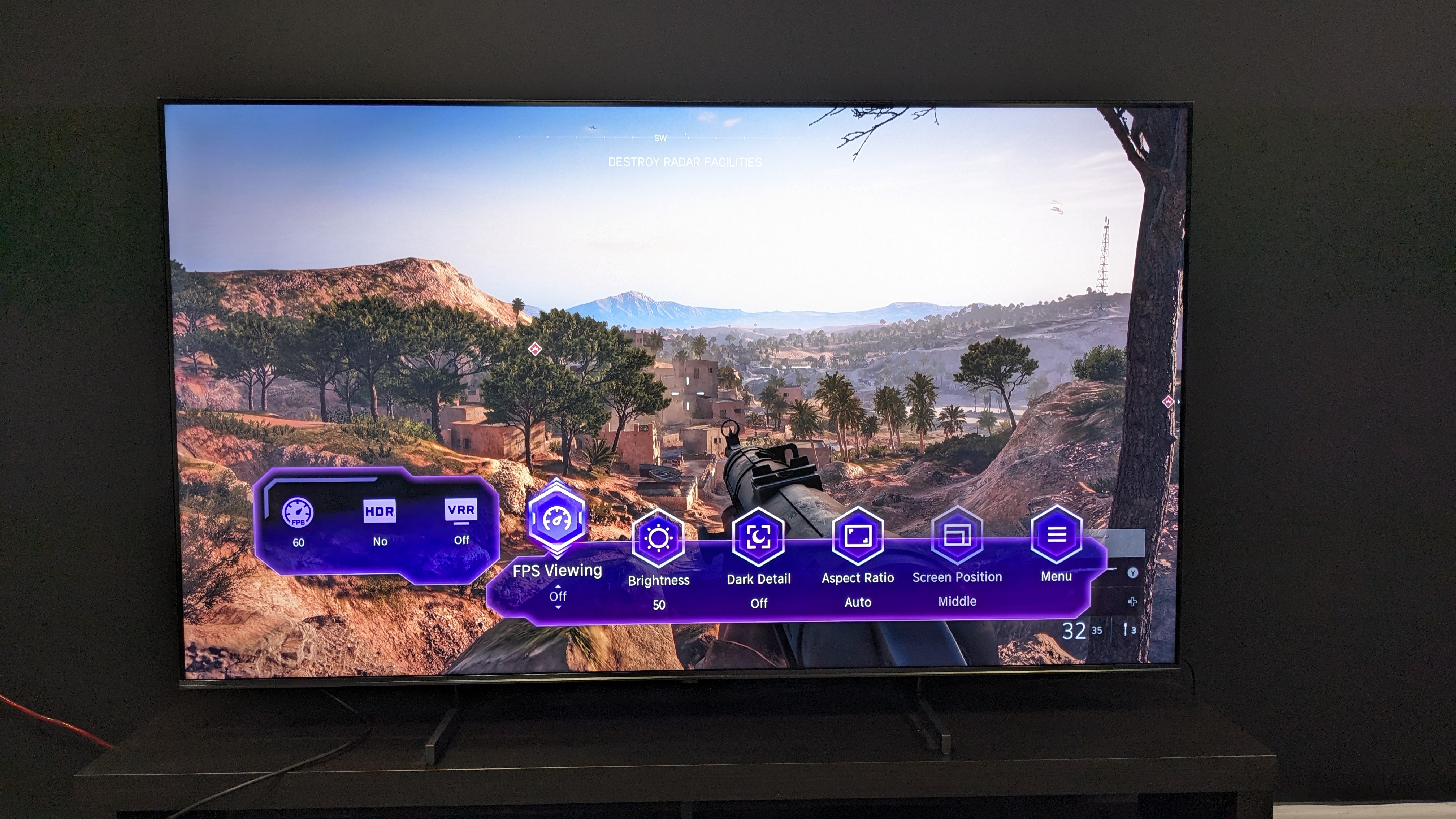
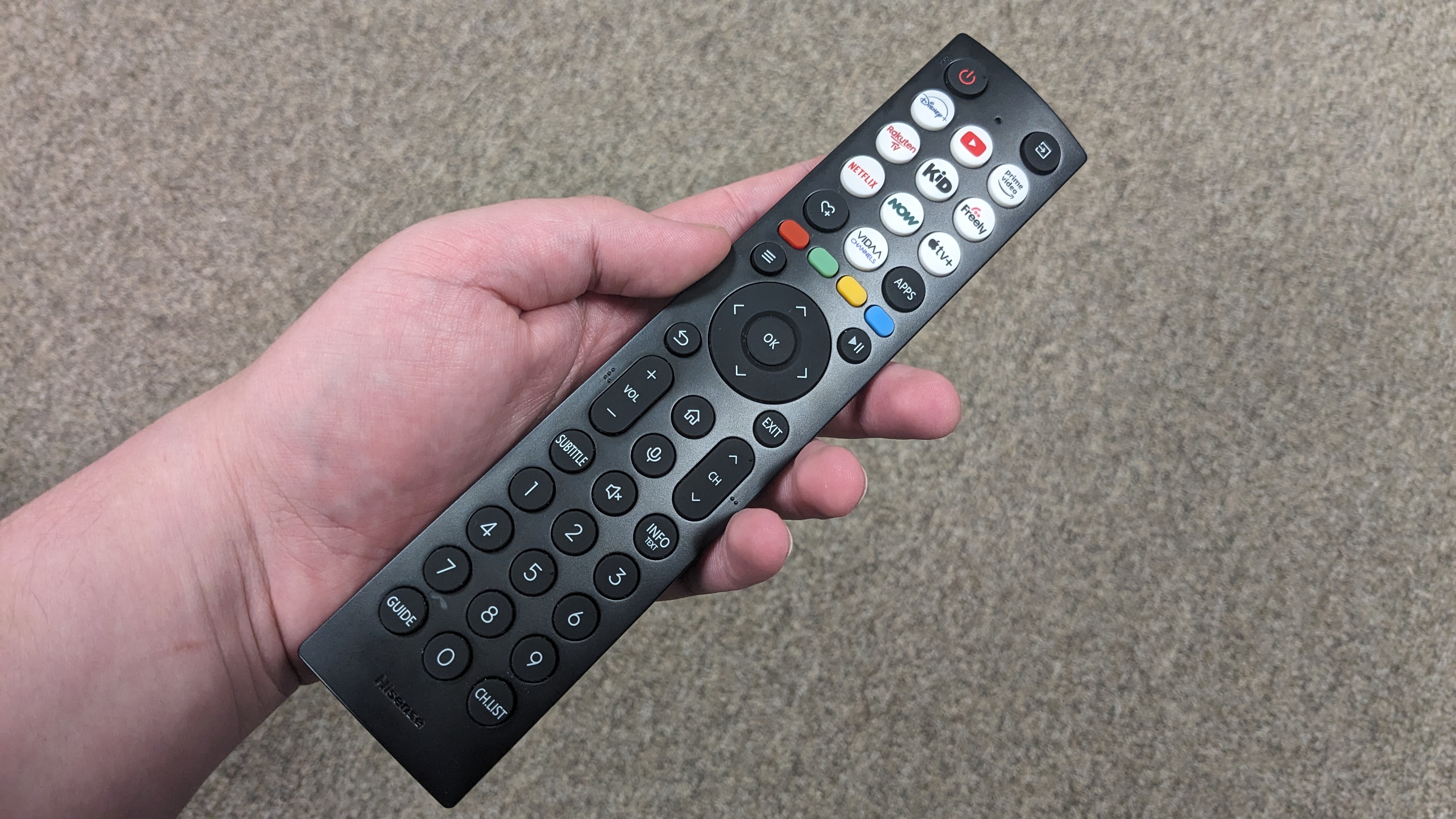
Specifications
1-minute summary: The Hisense U6N is a cheap, mini-LED TV that outshines its budget price tag. It offers a wide array of features and delivers great performance in most areas. Available from 55 to 85 inches, I reviewed the 65-inch model. I was surprised by how good details and texture looking during my testing, taking on a more refined quality than anticipated given the price. Its colors were also dynamic, with plenty of punch. The U6N carries comprehensive HDR support, including both Dolby Vision and HDR10+, and it really shone with 4K HDR movies and shows. Although it doesn't carry all the gaming features we look for, limited to 4K at 60Hz rather than 120Hz, I still found gaming to be an enjoyable experience, with VRR and Dolby Vision gaming offering a taste of next-gen. Its sound is on the thin side and I had to make some adjustments to get motion just right for sports – in particular, the AI Sports mode was too garish, so the best option was the Standard Mode with the Motion preset set to Smooth. But even with that in mind, the U6N's value is undeniable. When you're paying under $1,000 for an 85-inch screen with mini-LED, a good list of gaming features and a solid Google TV smart platform, you won't find much to complain about. I can't recommend the U6N enough for an affordable option.
Read our full Hisense U6N review

Reasons to buy
✅ You want a big screen without the price tag: The Hisense U6N offers a big screen mini-LED at a bargain price, but without major compromises.
✅ You want a good quality picture in a large sized screen: The U6N has a mini-LED panel that delivers punchy colors, refined details and solid contrast at a cheap price.
✅ You want a solid, budget gaming TV: Although it lacks 4K 120Hz, the U6N does still support 4K 60Hz, Dolby Vision gaming, VRR and ALLM to deliver a good overall gaming experience.
Reasons to avoid
❌ You want to avoid using a soundbar: The Hisense U6N does unfortunately suffer from limited sound, with thin-sounding speakers and a narrow soundstage. A soundbar is recommended.
❌ You want the best TV for sports: Sports fans will find that they need to make some specific adjustments to settings to improve motion – and even then, the U6N struggles compared to pricier TVs.
❌ You want the complete gaming package: The U6N may be a solid gaming TV, but it doesn't support 4K 120Hz like the best gaming TVs.
Show full expert analysis ▼
In-depth analysis

We tested the 65-inch Hisense U6N and found that while it delivered low peak brightness of 651 nits on a 10% window, its fullscreen brightness, which measured 580 nits, does make it a solid option for daytime viewing. In our review, we were impressed with its level of detail and strong textures, punchy colors and solid contrast. One surprise was its ability to maintain details in clothing during dark scenes, most challenging of which was The Batman. The U6N's picture falters in places, suffering from inconsistent motion and limited viewing angles, as well as black levels sometimes taking on a gray hue. But for the money, the U6N's picture is still leagues above other rival cheap TVs.

Built-in sound is unfortunately one of the Hisense U6N's weakest parts. Its speakers deliver good dialogue clarity and credible bass levels, but struggle in every other area. There's no sense of direction to the speakers and the soundstage is narrow and although Dolby Atmos is supported, it really isn't obvious during viewing. I would recommend a soundbar be used with the U6N, and thanks to its cheap price, it should be easy to add a budget bar in.

The U6N comes equipped with Google TV in the US, and I've generally found Google TV to be useful for tailored recommendations of movies and TV shows in the past, but found the large banners ads on the home screen a bit of an eye-sore. I found during testing that the U6N features plenty of picture settings for tweaking the picture and said in my review that "menus are well laid out and user-friendly, with settings neatly organized".

While the Hisense U6N does lack some of the major features we look for in the best gaming TVs, such as 4K 120Hz and HDMI 2.1 ports (except for eARC), as I said in my review "gaming on the U6N is still a fun experience". Its still very responsive at 4K, 60Hz and has a decent 13.2ms input lag time. There's also VRR, Dolby Vision gaming and ALLM on offer, all of which work effectively to deliver a solid gaming experience. I was also glad to see that the U6N's good picture quality for movies carried over into gaming, displaying the same vibrant colors and refined details.

Value is where the Hisense U6N shines. Priced at $700 for its 65-inch model, but it's been as low as $549(!) before, you're getting a great TV for a very affordable price. Not to mention that we've seen its 85-inch model for under $1,000, which is a serious bargain for a mini-LED TV with this much to offer. It does face stiff competition from other budget TVs, but there aren't many who offer this great a performance in a larger screen size for less.
Hisense U6N test results
Best premium OLED
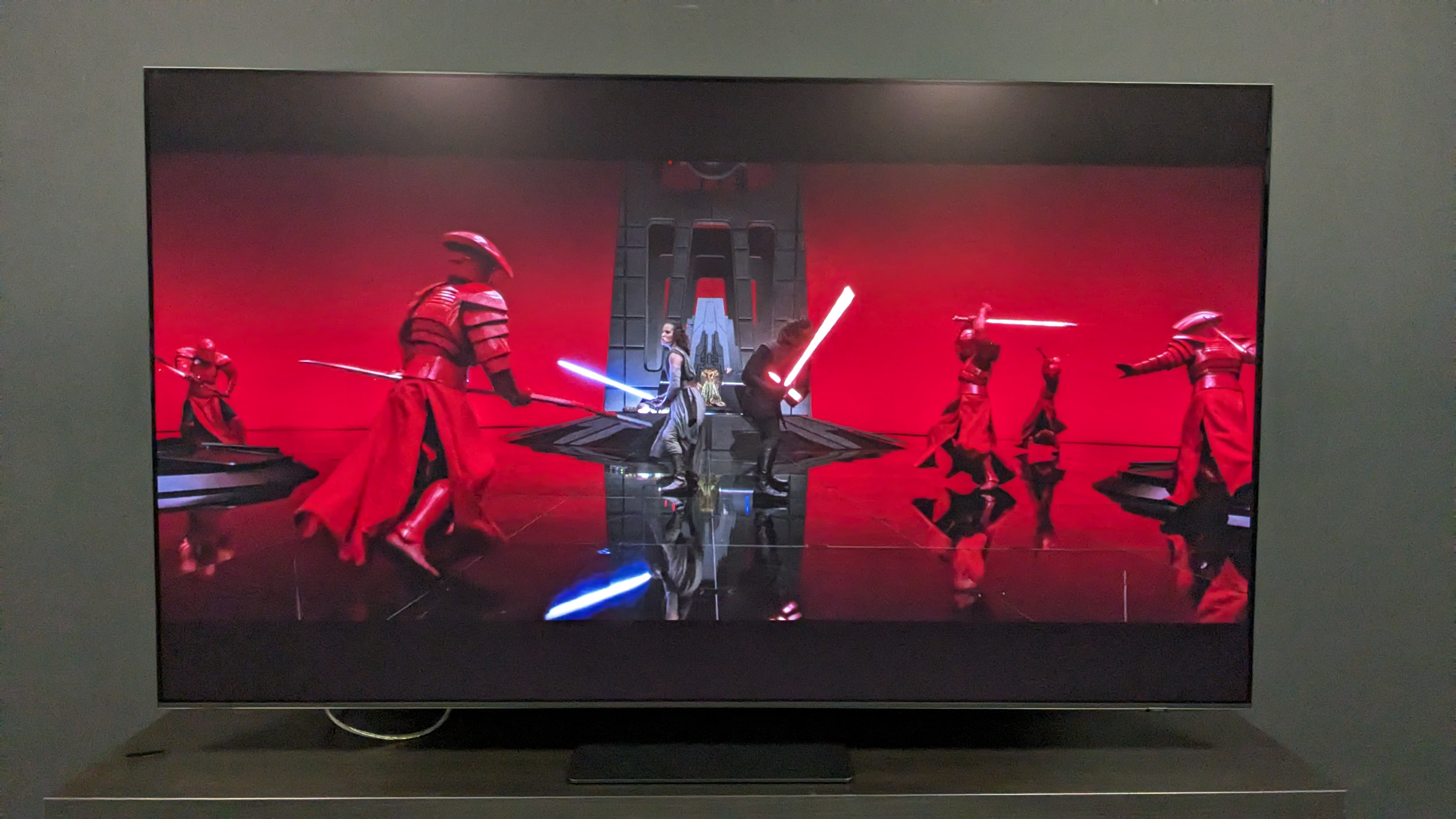
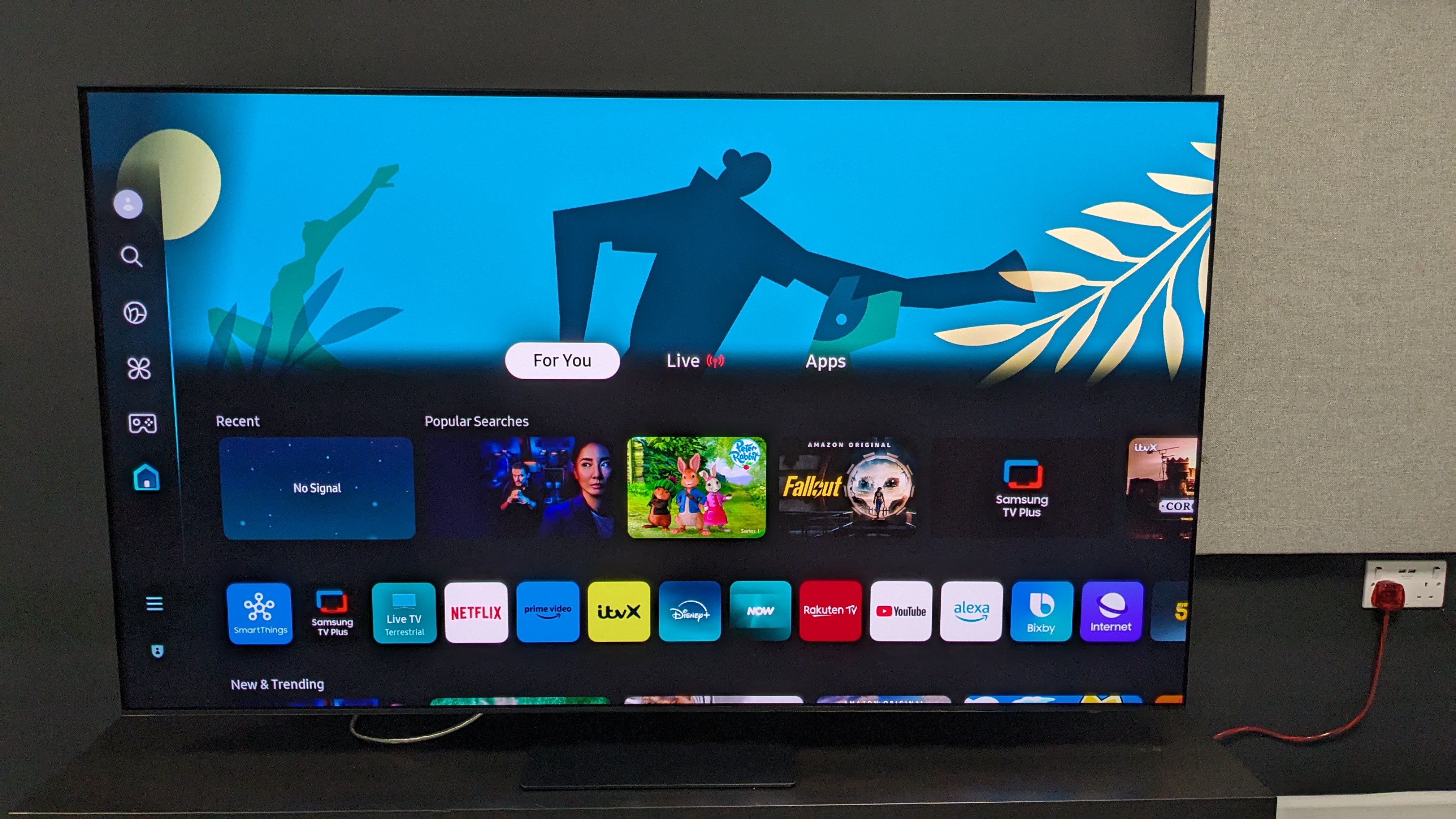
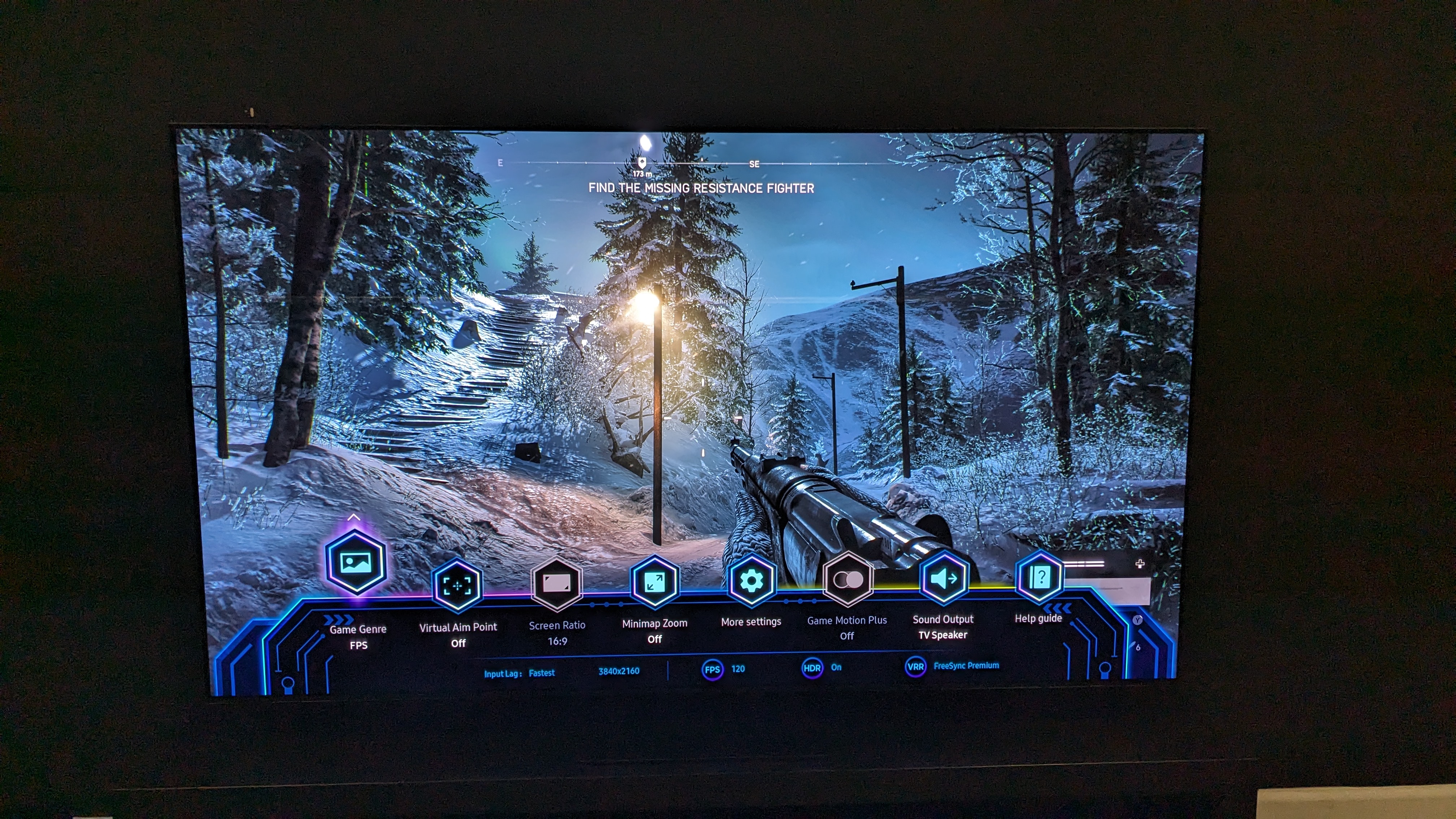

Specifications
1 minute summary: In a competitive OLED TV market with premium options from LG and Sony and more, the Samsung S95D stood head and shoulders above the rest when I tested it, thanks to some innovations in its screen as well as the great image processing and impressive sound we usually get from Samsung's high-end sets. It's the S95D's effective and impressive OLED Glare Free anti-reflection display covering that impressed me the most during testing, eliminating reflections in even the brightest of rooms (even the harsh overhead lighting in our testing room), solving OLED's biggest issue. Combine that with a colorful, realistic and contrast-rich picture, stacks of gaming features including 4K 144Hz, and a stunning, sleek design and you get the standard-bearer for OLED in 2024. It carries a premium price, but it's worth it.

Reasons to buy
✅ You want the best OLED has to offer: The S95D takes everything that makes its QD-OLED tech great – high brightness and rich black levels – and utilizes it to full effect.
✅ You want an accomplished gaming TV: Four HDMI 2.1 ports with 4K 144Hz support, variable refresh rate (AMD FreeSync Premium Pro included) and a host of other features make the S95D a superb OLED for gaming.
✅ You want one of the best-looking TVs: A super-trim profile with connections hidden in separate box, and a clever stand design give the S95D a floating appearance means it looks stylish and premium.
Reasons to avoid
❌ You want full HDR support: As with all Samsung TVs, the S95D doesn't support Dolby Vision. We don't think it needs it, based on our testing, but spec sticklers may want to look elsewhere.
❌ You don't want to pay a premium price: The S95D's premium quality does come with a price to match, may stretch the budget too far.
❌ You don't want to tweak settings: While it's still good, the S95D's Filmmaker Mode does require some adjusting to limit black crush, unlike LG's OLEDs out of the box.
Show full expert analysis ▼
In-depth analysis

The S95D's picture quality is nothing short of spectacular, using every ounce of its built-in QD OLED tech to create a visually stunning experience. Details and textures are incredibly lifelike and refined and we said in our review that "Faces and skin tones had almost photo-realistic accuracy as if they were actually in the room". We also praised the S95D's bold, dynamic colors and excellent contrast as well, but it's the OLED Glare Free anti-reflection screen that steals the show, which we said made reflections "nearly impossible to see" in our testing. We did find that there was some black crush in the S95D's Filmmaker Mode, but this is the only real complaint about a near-perfect picture, and tweaking settings fixed it. While Dolby Vision HDR support would also have been welcome, the set's tone mapping does such a good job we don't think it's a real problem. The S95D's picture is nothing short of magnificent and, as we said in our review, is "what OLEDs should strive to be".

Despite being a thin TV, the S95D's built-in speakers are still very good. Its best aspect is the Object Tracking Sound (OTS+) system, which accurately places the sound around the screen while connecting it to the action. Its bass is also powerful and, as we said in our review, "tightly controlled and precise". We did find, however, that the S95D's soundstage wasn't as immersive as we'd have liked. Although the S95D's sound won't beat the likes of the Sony Bravia 8, it's still very good. But, we do think the S95D's picture deserves sound to match, so if you can add an elite soundbar or home theater system, do.

Tizen, Samsung's own smart TV platform and the one used in the S95D, is a solid interface that provides a good amount of cutomization and organization options for users. Its hubs – Home, Gaming, Daily+, Ambient – are a great way to categorize different apps for easy navigation and there's plenty of picture settings to tweak. While it's not quite as intuitive or feature packed as other smart TV platforms such as LG's webOS, it's still a decent interface overall.

As a gaming TV, the S95D is packed with pretty much everything you could need. Across its four HDMI 2.1 ports, it supports 4K, 144Hz, ALLM and VRR (including AMD FreeSync Premium Pro). The Game Hub is a useful tool that organizes everything gaming into one place and provides access to cloud-based gaming apps such as Xbox, Luna and more. But, it's not just features where the S95D excels in gaming, boasting superb performance – thanks to a super-low input lag that we measured at 8.9ms during testing – and fantastic visuals that give any game real depth. If you're looking for a premium gaming TV, the S95D has you covered.

As a premium TV, the S95D was always going to struggle in terms of bang for your buck when compared to sets from the likes of TCL and Hisense, but an elite TV carries a higher price. The 65-inch model that we tested costs roughly $3,099 – identical to the rival LG G4 – which isn't cheap. But if you're looking for a TV that covers all the bases and performs at a top level, the S95D is a prime example that more than justifies its premium price. It's just that the price will undoubtedly be too high for some people.
Samsung S95D test results
Best cheap OLED TV
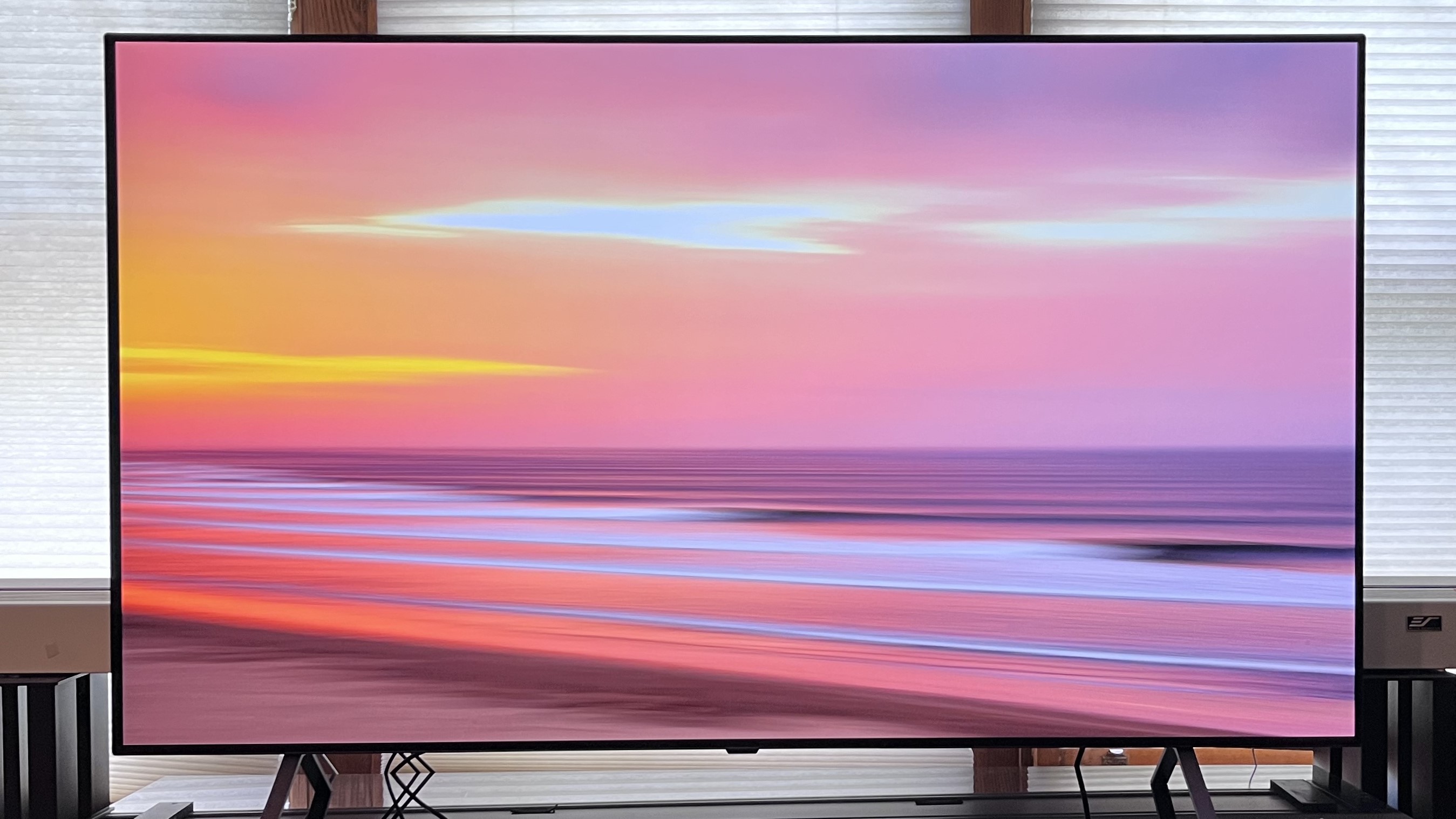
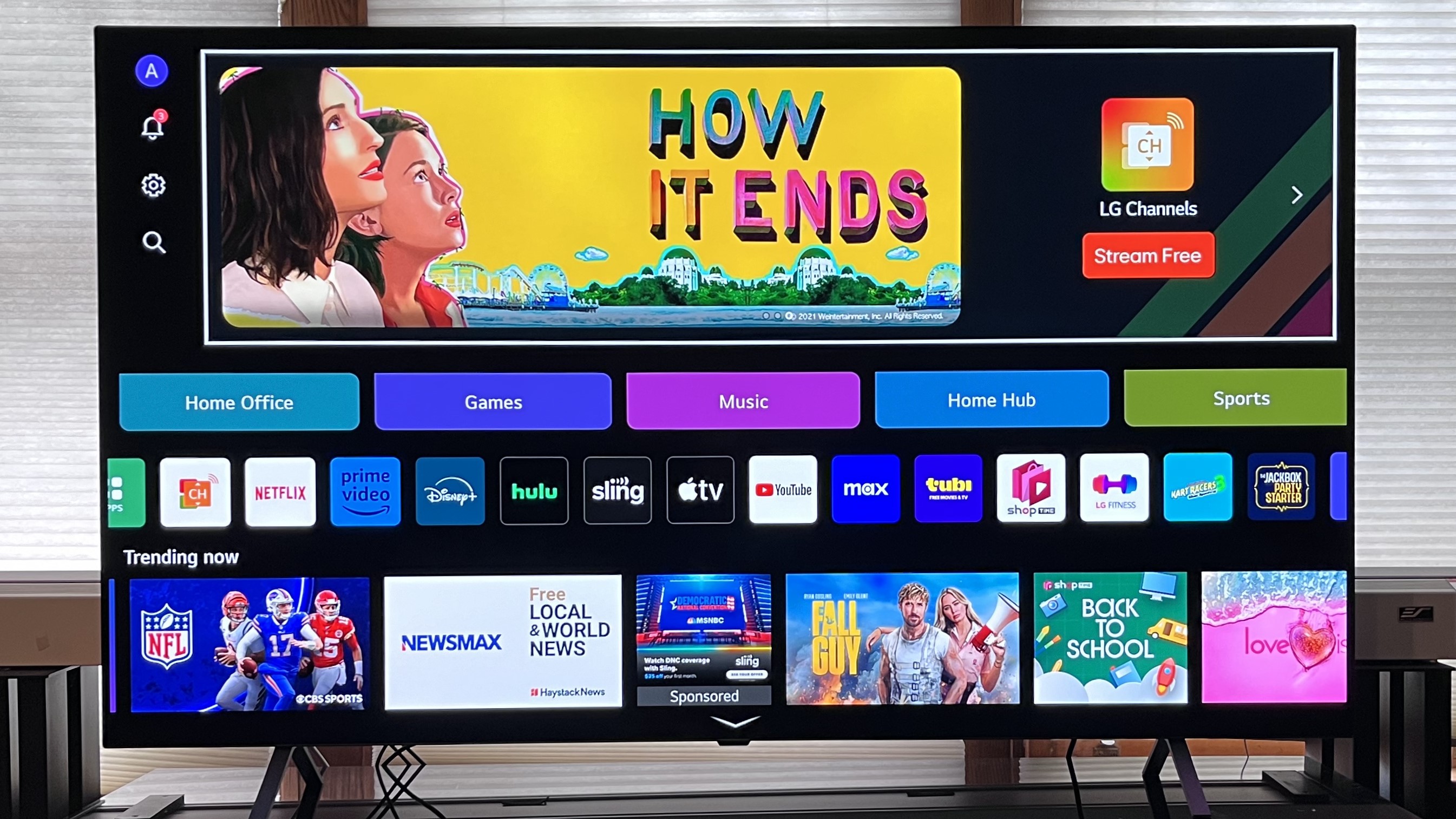
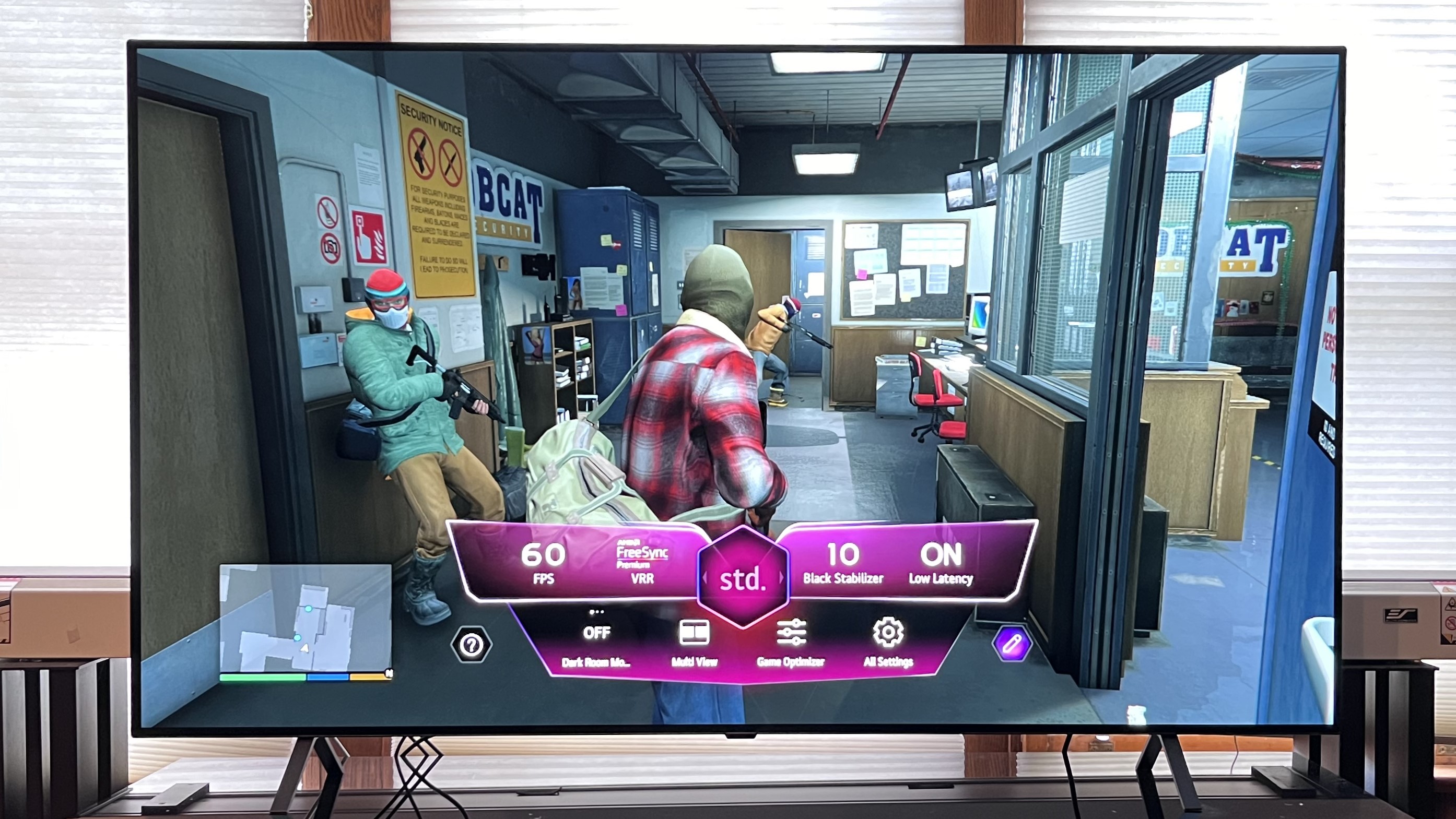
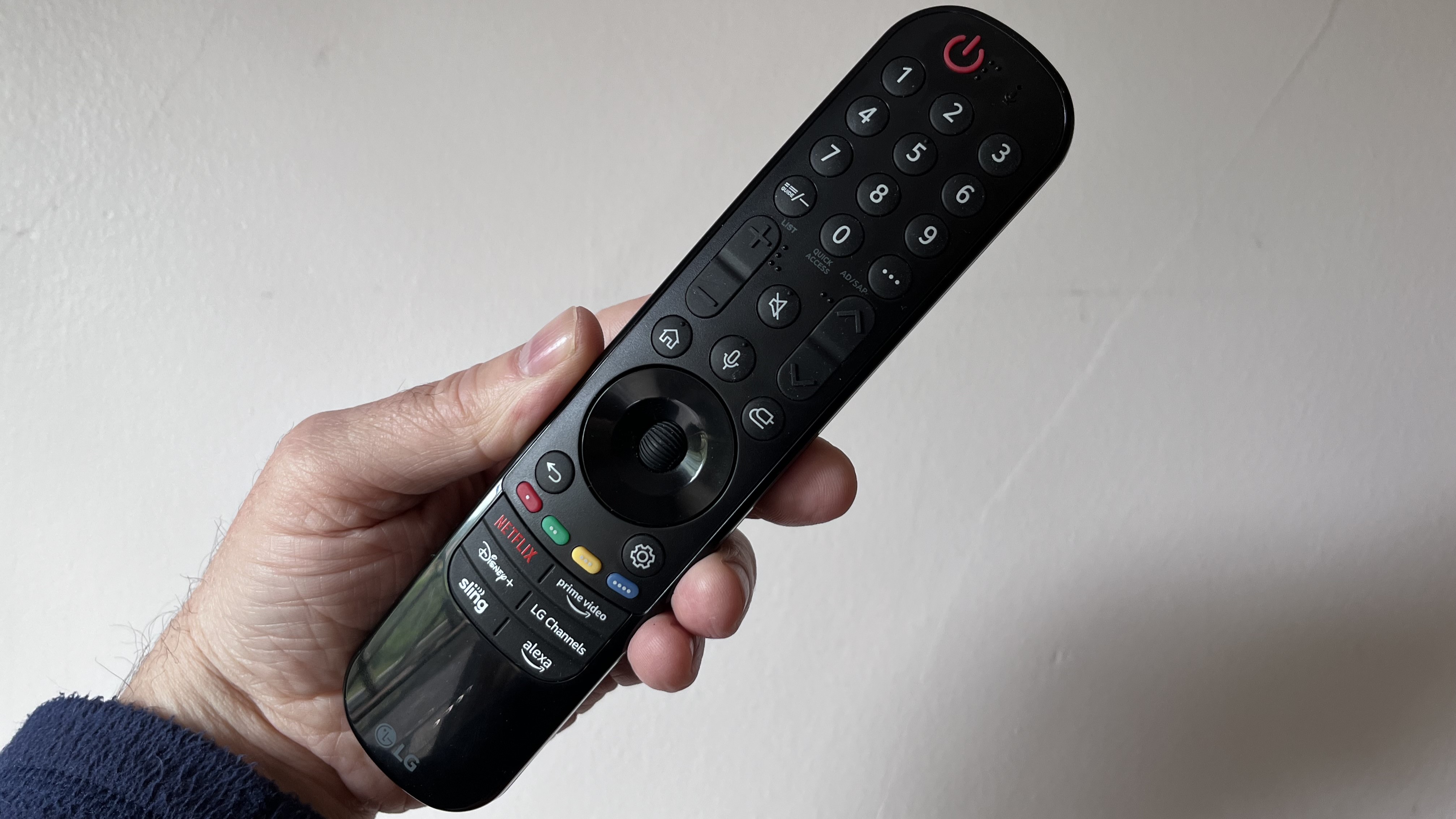
Specifications
1 minute summary: The LG B4 is the best way to get a 2024 OLED TV for an affordable price. While I found that it didn't offer the same level of quality, features and performance as its more premium siblings, the C4 and G4, when I tested it, the B4 is no slouch itself. It delivers impressive pictures with plenty of detail and contrast alongside excellent motion handling and dynamic colors. It also comes well-equipped for gaming, with four HDMI 2.1 ports for the first time in the B series' history, which support 4K 120Hz Dolby Vision gaming and more – and it comes in a new 48-inch size this year. Crucially though, it does all this for less than any other 2024 OLED TV and doesn't make too many compromises doing it. I found that it doesn't have the best built-in sound (the Sony Bravia 8 is a better option for that) and you can tell that its brightness is more limited than most other OLEDs, but that doesn't stop the B4 delivering the cinematic contrast that this screen tech is famous for, and I enjoyed watching it a lot – especially for the price it is.

Reasons to buy
✅ You want OLED's contrast for less: The B4 offers access to a 2024 OLED TV for cheaper than any other OLED out there – and still delivers in key areas.
✅ You want an affordable gaming OLED: It may be a cheaper OLED, but the B4 is still stacked for gaming, with four HDMI 2.1 ports all offering 4K 120Hz and Dolby Vision gaming support.
✅ You want a great smart TV platform: LG's webOS is one of the best out there, delivering top-tier streaming support in a friendly interface, and with very smart quick access to key settings.
Reasons to avoid
❌ You need the best built-in sound: While it delivers on the picture front, the B4's built-in sound is limited, lacking the quality of sets such as the Sony Bravia 8.
❌ You want the brightest OLED around: The B4 offers below-average brightness levels compared to other OLEDs, including its mid-range sibling the LG C4.
❌ You want the most extensive HDR support: While the B4 does support the popular Dolby Vision format, it does not support HDR10+.
Show full expert analysis ▼
In-depth analysis

Equipped with less advanced OLED panel than more expensive models, the LG B4 still manages to deliver great picture quality. In our review, we found the B4 to be accurate in terms of color and contrast, especially when using its Dolby Vision Filmmaker Mode. We also found its motion handling to be excellent. Where it's limited is brightness when compared with more premium OLEDs – we measured its peak HDR brightness at 656 nits, compared with the step-up LG C4's 1,024 nits. That's a big difference, and you can very much see it. We found this limited brightness to slightly take away from the B4's dynamic picture, but it still delivers the deep, perfectly precise contrast that OLED is famed for, and the lack of brightness is much less of an issue if you watch mostly in controlled lighting environments. At this price, the B4's picture is more than accomplished enough and befitting of an OLED TV – it's just that will get more if you pay more.

Sound is one of the B4's weaker areas. We found in our review that the B4's speakers have "decent balance and dialogue comes across clear", but this is where the best parts end. Dolby Atmos reproduction isn't particularly refined and bass is limited. Pushed to higher volumes, we also found the B4's sound becomes "a bit thin and edgy". For those looking for the best built-in sound, look to the Sony Bravia 8. Although the B4's sound "does the job", we'd recommend one of the best soundbars to complement the B4's picture.

Equipped with LG's own smart TV platform, webOS 24, we described the interface as "one of the best going" in our review, praising its Quick Cards for easy app organization and navigation. We also really liked the Quick Menu thanks to its convenience for access to useful settings such as picture mode, sound mode and more. The only real negative with webOS is its large banner ad at the top of the home menu, but most smart TV platforms have this today. In terms of smart TV interfaces, not many can compete with webOS – much to the B4's benefit.

The B4 is an excellent option for gaming, especially for those looking for a more affordable OLED. Stocked with four HDMI 2.1 ports, supporting 4K, 144Hz, Dolby Vision gaming, variable refresh rate (including AMD FreeSync Premium and Nvidia G Sync) and auto low-latency mode, the B4 is seriously well equipped for gamers. It also comes with LG's Game Optimizer for easy settings adjustments, including a Boost Mode that drops the B4's input lag to an ultra-low 9.1ms. We were suitably impressed with the B4's gaming prowess.

The B4 is a well featured TV for the money, but its value ultimately comes in to question when put up against the step-up LG C4. For the 65-inch model of the B4, the official price is around $1,499 as opposed to $1,599 for the C4, and C4 comes with that brightness boost and faster processing if you can stretch your budget a little. Still though, the B4 is fairly priced for what it offers, and is still the cheapest 2024 OLED TV you can get – and price cuts during the regular sales will bring it down further.
LG B4 test results
The best TV for sports viewing
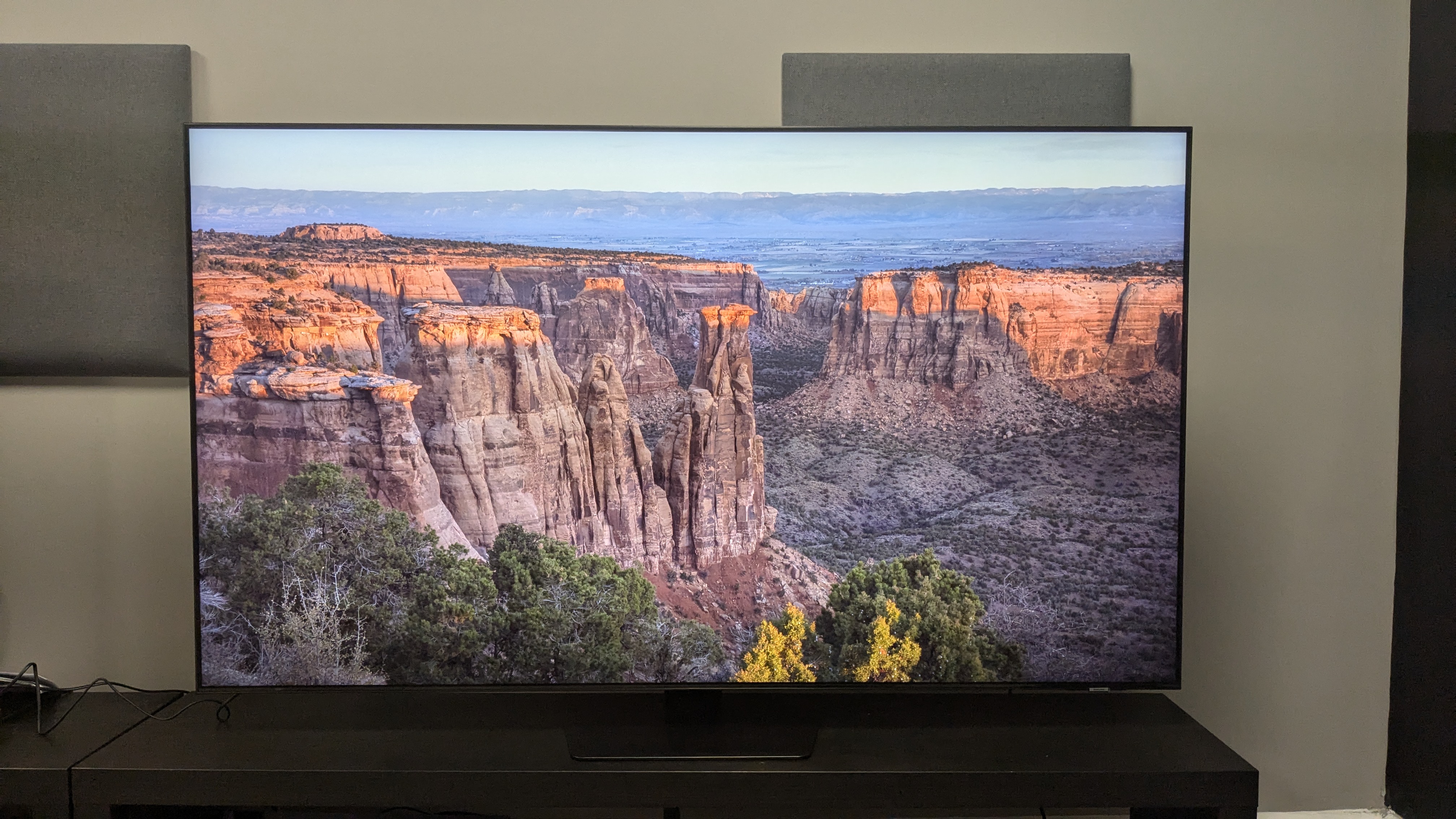
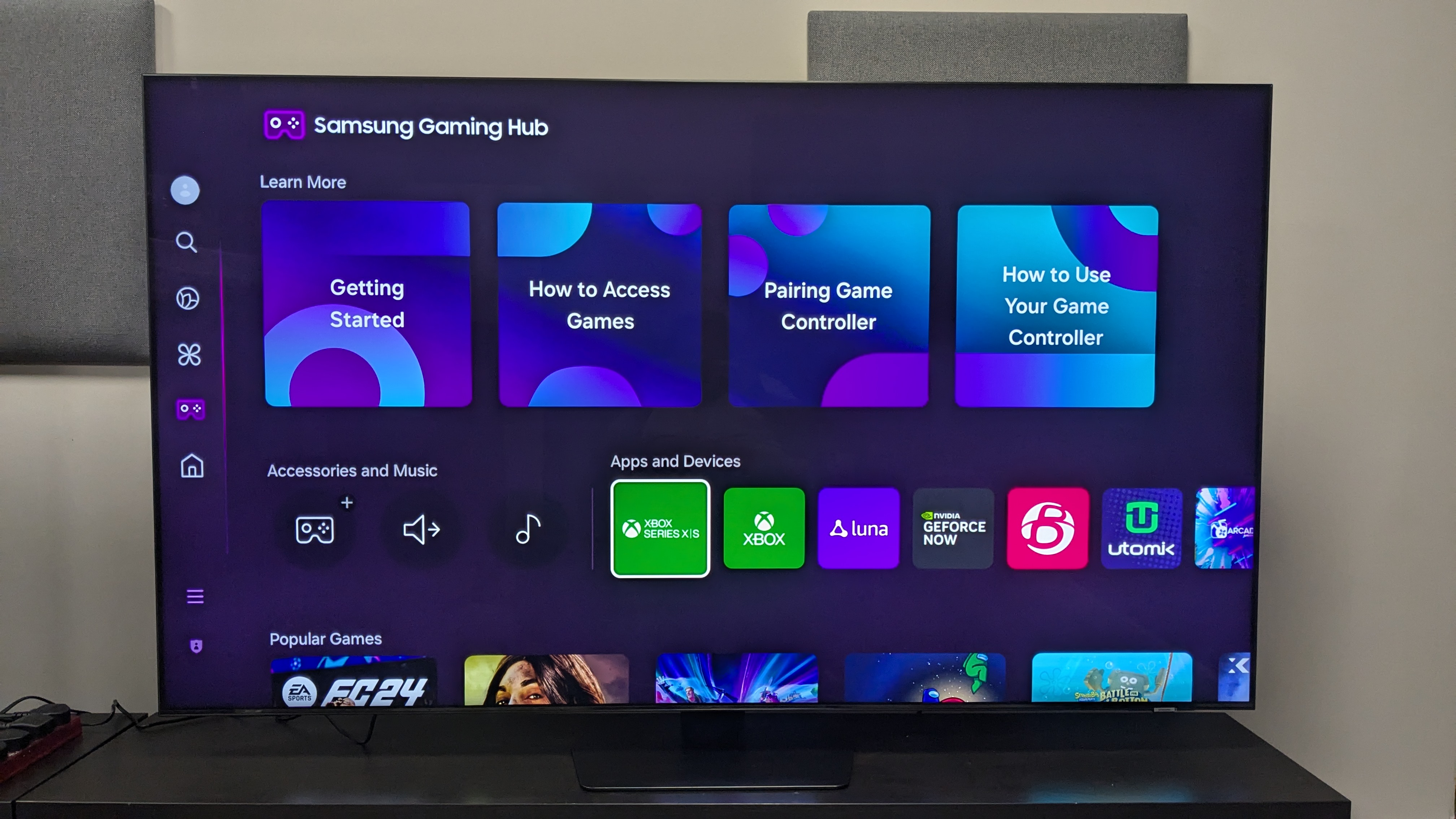
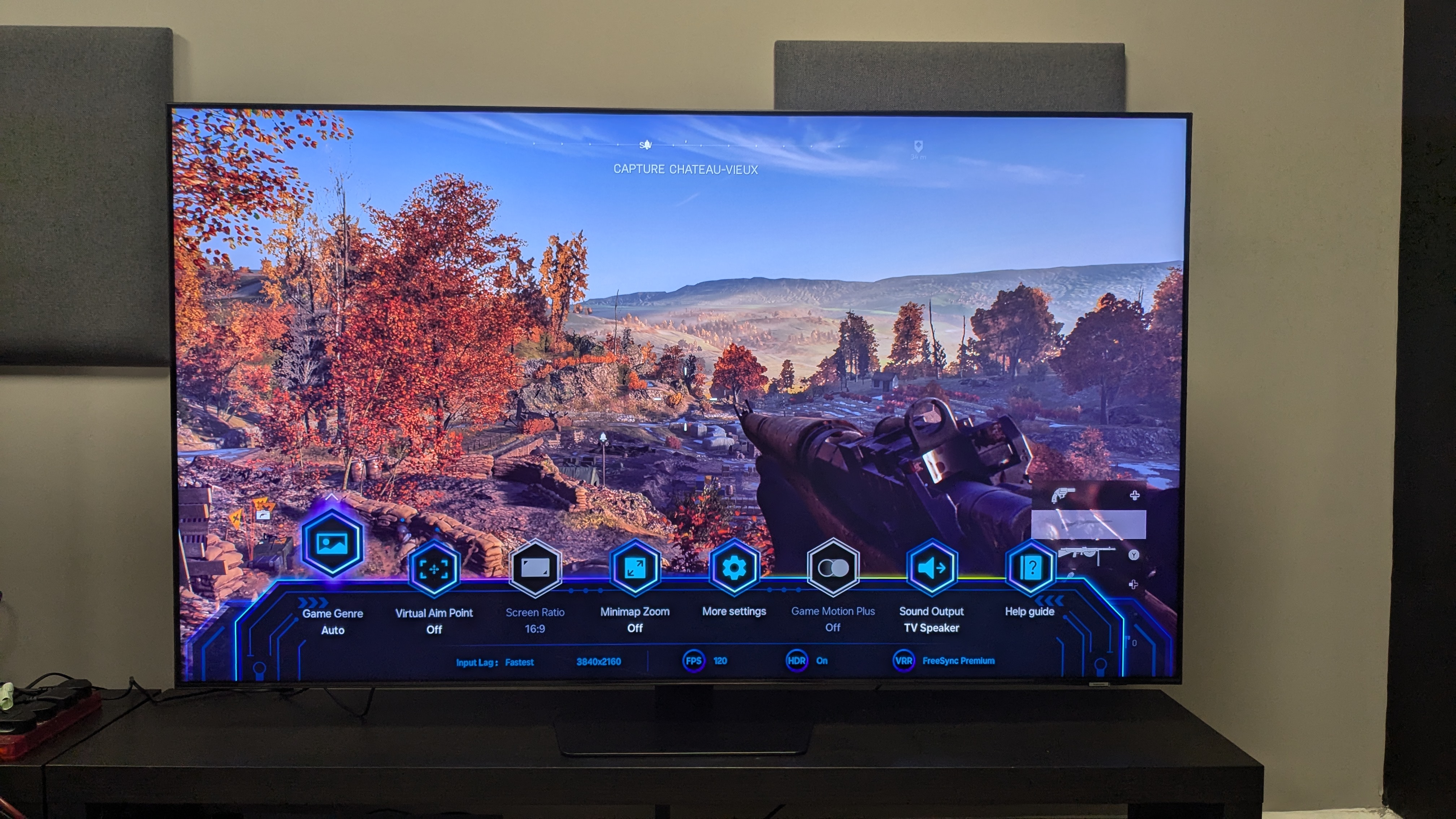
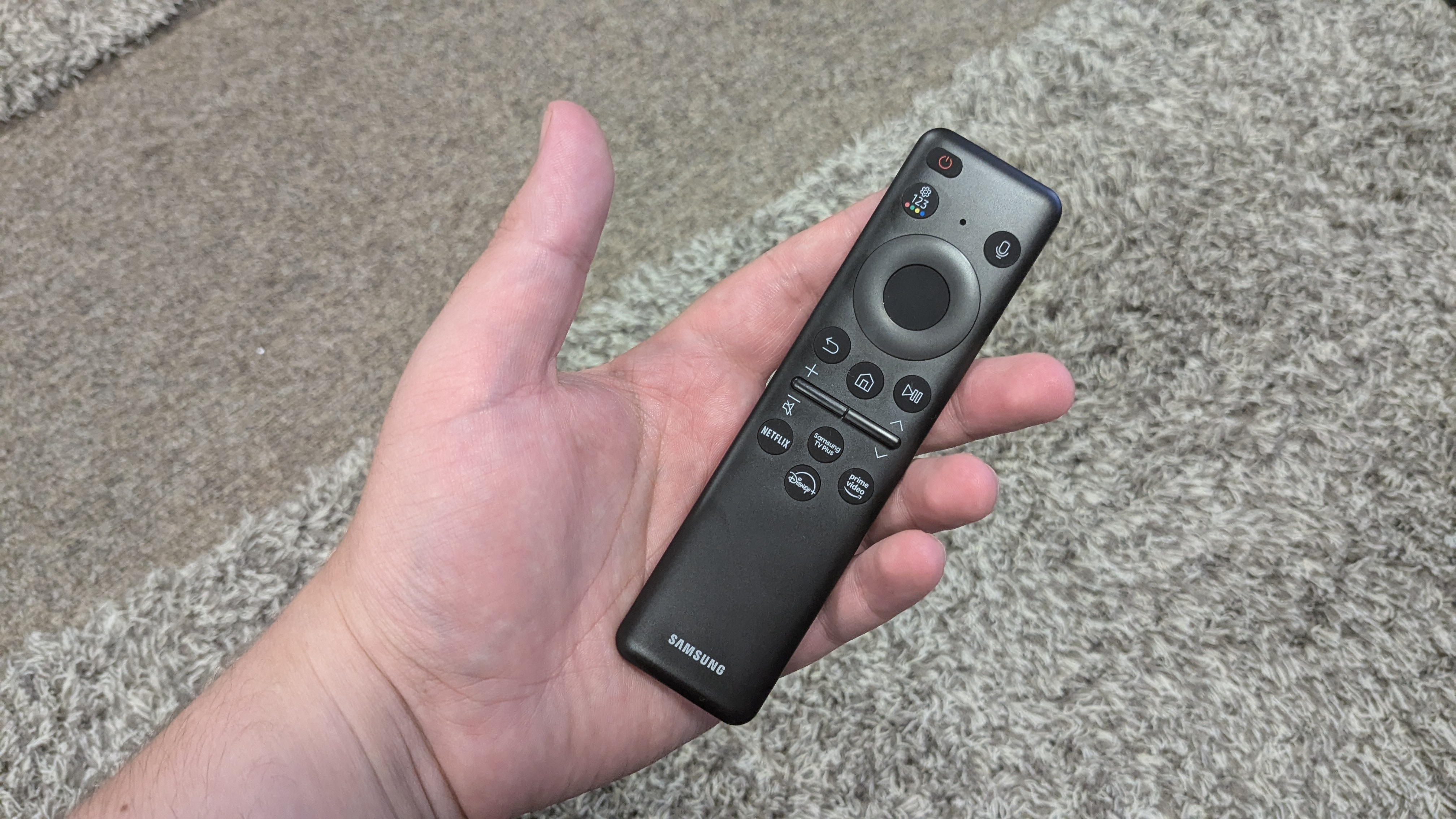
Specifications
1 minute summary: Combining both high brightness levels and excellent motion handling, the Samsung QN90D firmly establishes itself as the premier TV for sports – especially when viewed in bright rooms. But it wasn't just sports where it impressed me during testing, as the QN90D also demonstrated rich contrast and vivid, natural colors when viewing movies as well. The QN90D is also ideally equipped for gaming, with four HDMI 2.1 ports supporting 4K, 144Hz, VRR (AMD FreeSync Premium Pro included), ALLM and more – as well as excellent performance and graphics to pair with it. The QN90D does face a lot of budget competition from brands such as TCL and Hisense that offer a similar level of features – I certainly wouldn't blame anyone for opting for the cheaper Hisense U8N and most people would be very happy with the results – but its the superior processing of the QN90D that means it stands above these rivals for me when it comes to sports.

Reasons to buy
✅ You're a sports fan: The QN90D delivers bright, colorful images with fantastic motion handling, so you can really see everything that's happening.
✅ You watch in a bright room: With both high peak and fullscreen brightness levels, the QN90D is perfect for rooms with brighter viewing conditions.
✅ You want a daytime gaming TV: The QN90D comes equipped with nearly every feature you can want in a gaming TV and its bright picture is great for daytime gaming.
Reasons to avoid
❌ You want the best value mini-LED TV: There are affordable mini-LED sets from TCL and Hisense that offer similar picture quality and features for less – that's why the Hisense U8N is so high on our list.
❌ You really want Dolby Vision: The QN90D doesn't support Dolby Vision HDR – much like every other Samsung TV. The high brightness levels mean we don't think this is a major issue.
❌ You want the most expansive sound: While its built-in speakers are effective enough, its soundstage does feel a bit limited.
Show full expert analysis ▼
In-depth analysis

The Samsung QN90D's main strength is in its motion processing, making it superb for sports. In our review we found "intense sequences and fast panning camera shots were expertly handled" with whatever sport was thrown at it. Its high brightness levels – we measured peak brightness at 2,192 nits and fullscreen brightness at 680 nits – mean it's also effective in brighter viewing environments. But it's not just sport where the QN90D excels, as it delivers bold colors and solid contrast for movies as well. There is some backlight blooming present, as with most mini-LED TVs, and sets such as the TCL QM851G and Hisense U8N deliver higher brightness, but the QN90D delivers a slightly more consistent picture overall – especially with motion.

The QN90D's sound quality is generally good overall. We were most impressed with the QN90D's placement of sound around the screen, using its Object Tracking Sound+ (OTS+), that connected the action to the audio perfectly. It also delivered solid bass levels and clear speech throughout our testing. However, also during our testing, we couldn't help but feel the QN90D's soundstage was lacking – or, as we said in our review, "almost as if it couldn't escape the screen's borders". While most people will be happy with the QN90D's speakers, we still think it deserves a soundbar if you're a home theater fan.

Using Samsung's own smart TV platform, Tizen, the QN90D comes with a good number of picture settings for those who like to experiment. Tizen also uses several different hubs – Home, Game, Daily+ and Ambient – to organize the QN90D's apps and features in an easy to navigate fashion. While it's a very good smart TV interface, it doesn't quite best the likes of webOS as it lacks sound setting customization and doesn't feel quite as smooth. Nevertheless, most will find it perfectly fine.

The QN90D is perfectly equipped for gaming, with support for 4K, 144Hz, VRR (AMD FreeSync Premium Pro included), ALLM and HGiG support, across four HDMI 2.1 ports. We were impressed by the QN90D's fantastic performance, thanks to its low 9.9ms input lag. It also carried across its strong picture quality from movies to gaming, with excellent contrast and color. In places, its HDR tone mapping did come across a little aggressive, but it still looked great overall. Combining all this with high brightness, the QN90D is a sublime gaming TV.

Value is a tough ask for the QN90D as although it mostly delivers across the board, more affordable models such as the TCL QM851G and Hisense U8N offer a similar number of features, comparable picture quality and performance but at fraction of the price. For context, the 65-inch QN90D retails for $1,599 compared to the Hisense U8N, which we've seen for as low as $999 for its 65-inch model. The QN90D is still the top choice for sports no question, but for more general use, the price gap between it and more affordable mini-LEDs may be too great.
Samsung QN90D test results
The best TV for sound
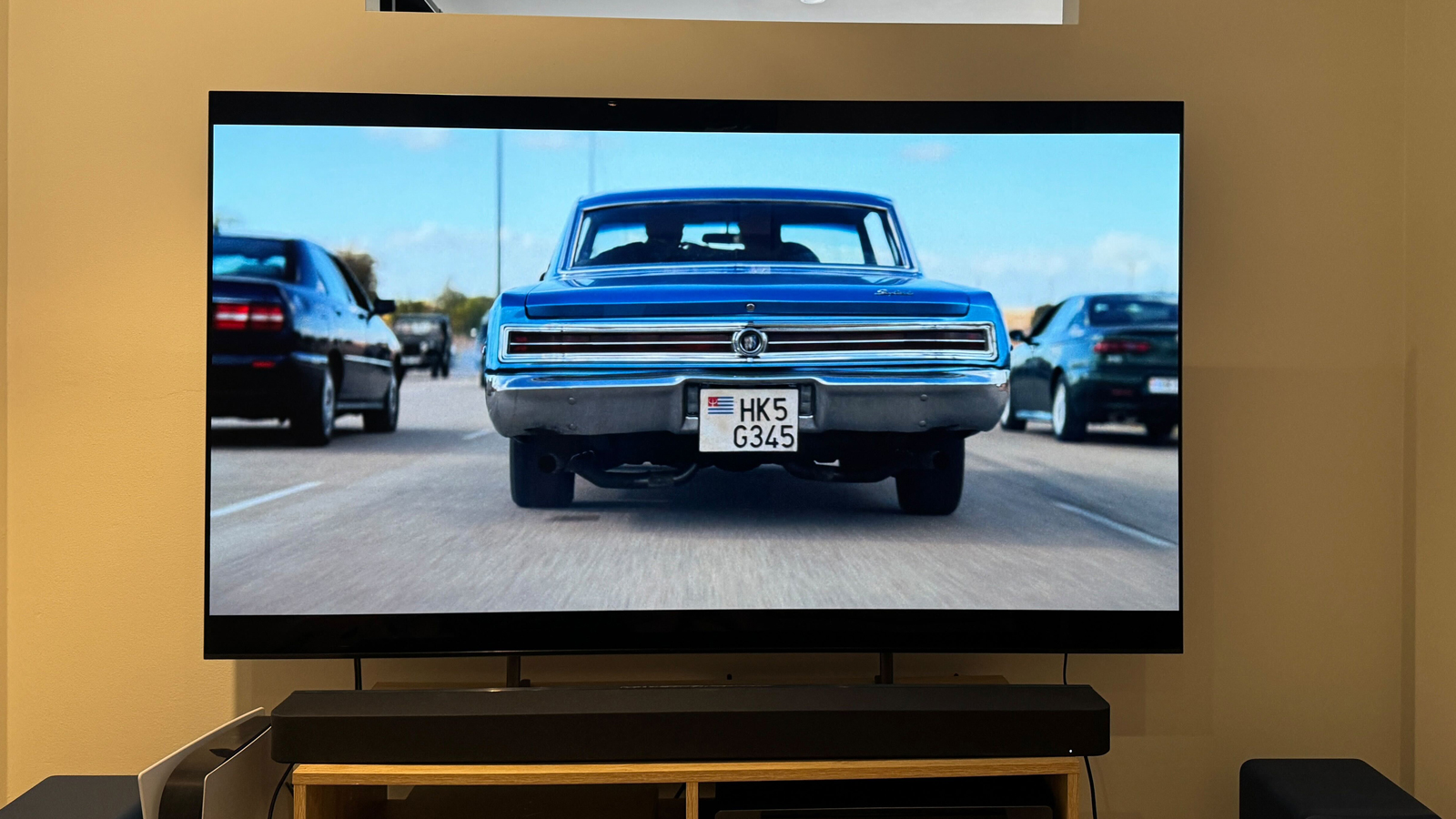
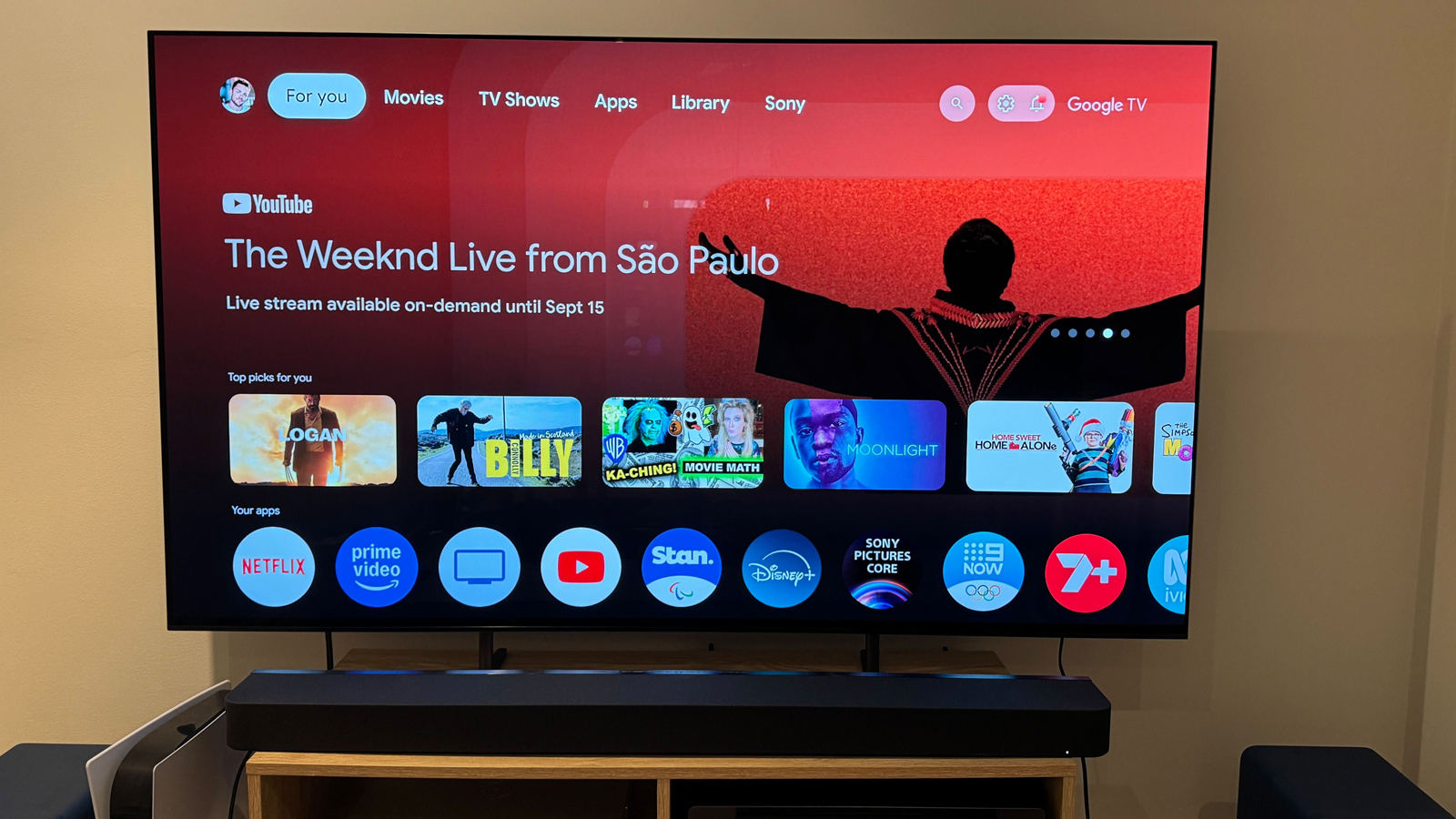
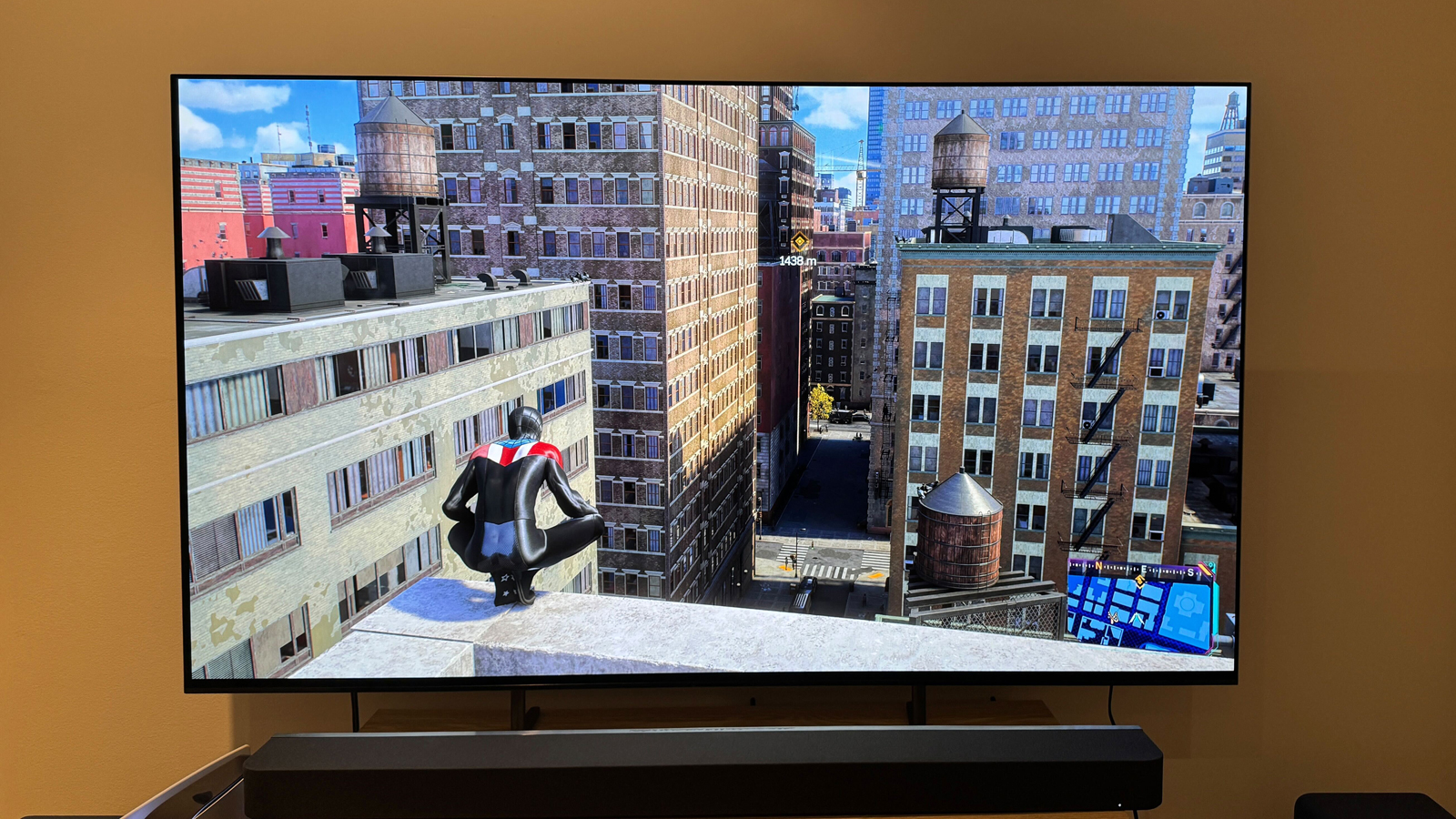
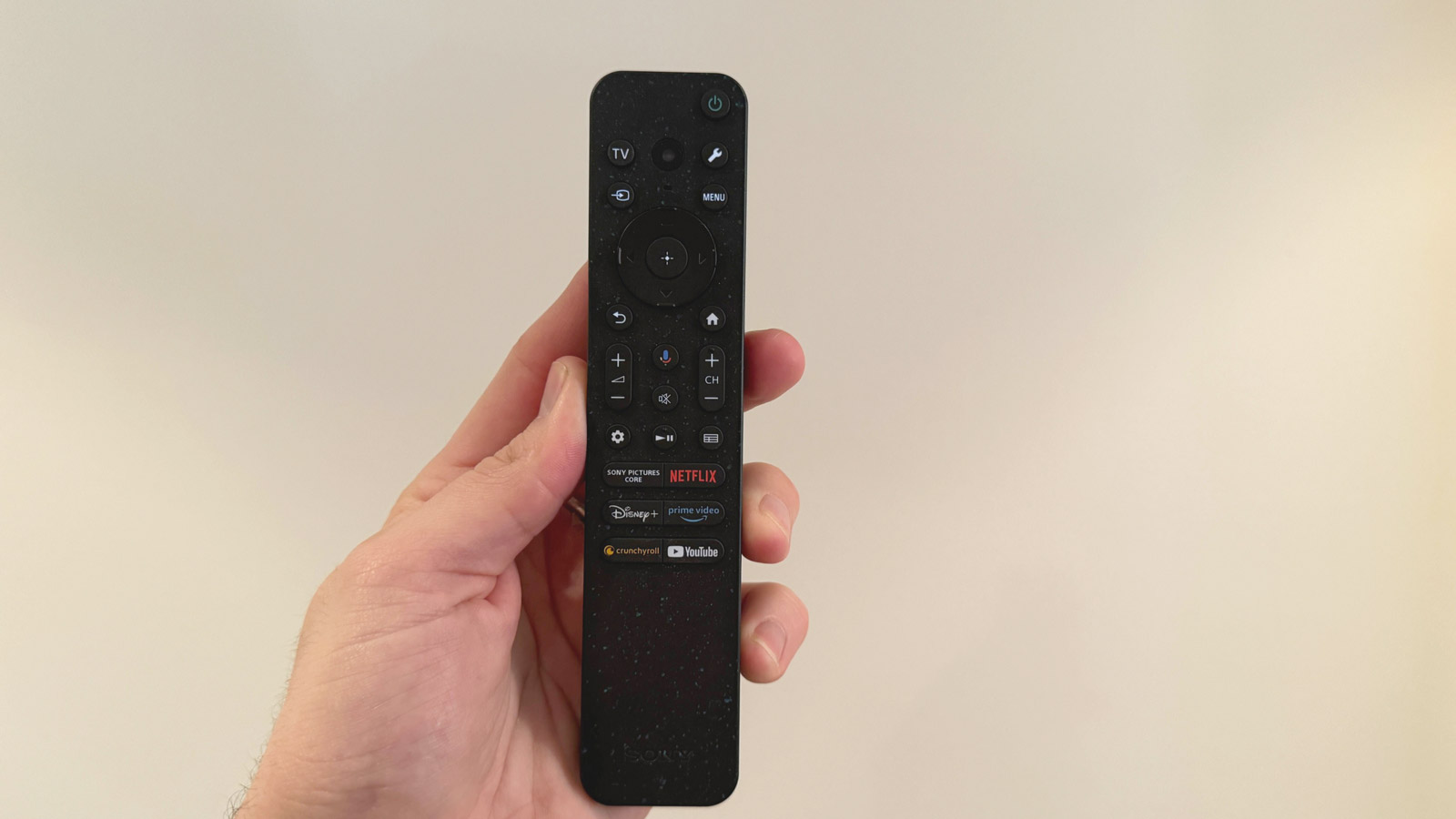
Specifications
1-minute summary: Sony's TV can have a bit of a tough time in our rankings because they sell at a significant price premium over the equivalent models from LG and Samsung, and while their performance tends to be extremely impressive, most people will take 95% of the performance for a significantly lower price. However, there is a good reason they cost more, and that's the sound: with a lot of other TVs, (LG especially), I consider a soundbar to be a must, but that's not the case with Sony's TVs. The Bravia 8 uses Sony's usual trick of turning the whole screen into a speaker, and it produces more powerful, dynamic and clearer audio than its rivals, and with precise positioning of sounds to match the action on-screen in a way that really comes across. And let's be clear, the visual quality is just beautiful as well, though at a lower level of brightness than rivals, so I don't think it's quite as versatile for use in brighter rooms as the LG C4. But if you want a gorgeous-looking-and-sounding single package, the Sony Bravia 8 more than satisfies.
Read our full Sony Bravia 8 review

Reasons to buy
✅ You don't want a soundbar: The Sony Bravia 8's smart speaker tech uses the whole screen to generate sound, giving it big and bold audio without a separate box.
✅ You want a glorious movie image quality: Sony really goes for refined and natural pictures, and the Bravia 8 delivers these, with the rich contrast of OLED.
✅ You want to make the most of a PS5: Sony's TVs deliver better HDR with PS5 thanks to a unique mode, and auto-switch the Game mode based on game genre.
Reasons to avoid
❌ You'll watch in a bright room: The LG C4 is almost 30% brighter than this, meaning that it's much better at overcoming reflections.
❌ You want four HDMI 2.1 ports for gaming: Only two of the four HDMI ports support 4K 120Hz and VRR, so it's not as well future-proof as the LG C4.
❌ You're budget-conscious: The Bravia 8 is priced significantly higher than almost all the other TVs here, so if you want to keep the price down, look elsewhere.
Show full expert analysis ▼
In-depth analysis

The elephant in the room for the Bravia 8's picture quality is that it's not as bright as the LG C4, and is around half as bright as the likes of the Samsung S95D, which means there's a clear difference in contrast levels between them – and the low brightness means that for daytime viewing in bright rooms, some scenes will struggle against strong reflections. However, outside of that, the Sony is a total knockout. It may not go super-bright, but we found that white tones looked strong and clean, and there's a huge amount of nuance in the dark areas, making it easy to see fine detail in shadows, giving it a strong cinematic feel. Our review also praised the "natural and accurate colors" with realistic and subtle tone shifts playing in the light. There's a ton of detail too, and Sony does a great job with upscaling lower-quality material. Based on our testing, we strongly recommend avoiding Professional mode (which is Sony's equivalent of Filmmaker mode) when watching non-HDR stuff, though – it was incredibly dark. We also preferred Dolby Vision Bright over Dolby Vision Dark for watching Dolby Vision movies and TV – again, Dark was just a bit too dark on this limited-brightness screen.

This is obviously the key thing we've chosen this TV for, and nothing sounds better at the same kind of price. Not only does it feel deep and clear, but the positional effects are as good as it gets right now. As we noted in our review, when watching an action sequence in Shang-Chi "when an attack landed towards the bottom-left of the screen, for example, that’s exactly where it could be heard, as opposed to a full sound coming from all speakers." We also noted that there was an impressive level of height created from object-based soundtracks (such as IMAX Enhanced DTS:X) and that the volume could be turned up impressively high without being distorted, and only added to the positional effects when doing so. We also really liked the Voice Zoom dialogue enhancer, which made speech easier to pick out but kept it sounding natural. The only issue here is that bass isn't very deep, but that's true of anything that doesn't come with a real subwoofer, and the low-frequency performance you get here is still way above average.

Google TV is extremely comprehensive when it comes to streaming options, so there's no fear that you'll want to watch something you can't find, even if it's quite a niche service. We like Sony's quick settings menu, which brings up commonly-tweaked options at the bottom of the screen without interrupting what you're doing. The Eco Dashboard makes it possible to see how much energy you'd save by changing settings if that's a concern for you (this does tend to degrade performance though, be warned). The fundamental issue, though, is that we found it to be slower, less slick, and a little less intuitive than the webOS software on LG's TVs. That's probably best-in-class right now, while Google TV is good and comprehensive, but not our first pick.

The good news for the Bravia 8 compared to previous Sony TVs is that we measured an input lag of 12.8ms, which is a big improvement over the 16.5ms we measured on the Sony A80L that it replaces. It's still not quite as good as the 9.2ms of the LG C4, but only a handful of people will really care about that difference – the Bravia 8 is more than fast enough to feel like games are responding instantly. You also get the best HDR performance from both consoles here, because Dolby Vision Gaming is supported for the Xbox Series X, while Sony's Auto HDR Tone Mapping feature is an equivalent for PS5 found only on its own TVs – the idea is that it adjusts the HDR processing depending on the particular scene you're looking at, for better detail in the results. Sony's Game menu offers ways to tweak gaming settings that are useful for the more hardcore and is easy to use. The key flaw here, though, is that only two of the four HDMI ports offer HDMI 2.1 support for 4K 120Hz gaming, whereas the LG C4 offers four ports with this support, making it more futureproof for those who may add more consoles (or other devices that need this type of connection).

We already mentioned that the Bravia 8 is notably more expensive than its LG and Samsung equivalents, but that spending more on this TV means you don't necessarily have to spend on a separate soundbar to get fulfilling sound. So it's far from bad value, especially considering how good the pictures look, but you won't see us labeling it as the bargain of the year unless Sony suddenly gets very aggressive with the price drops.
Sony Bravia 8 test results
The best TVs 2025: comparison charts
Here's a summary of our scores for the key areas we rate TV in – you can read more about each TV's individual scores in their respective entries in this guide. You can sort the table above by the different categories by clicking the column headers.
We measure the objective performance of TVs using as part of our testing process, using these figures to help us make a judgment on the picture quality that we're seeing. The following measurements were all taken by our labs or testers, using professional-level equipment and software. You shouldn't judge a TV based solely on test numbers, but it can be useful to make quick comparisons between them while decided what to buy, so here are the results for all the TVs we rate here together. First is brightness, measured using both HDR and SDR video, in small areas and fullscreen (which makes a big difference).
Here are our test results for measuring how close the TVs come to supporting 100% of the P3 color range, which used in HDR video. The BT.2020 range is also used in pro video work, but is less important in general use.
Input lag is the time it from when an image enters the TVs HDMI port, to when it appears on-screen. This is important for gaming, because you want action to happen immediately after you press the button, not with a delay. We measure it using a piece of specialist equipment that rapid-fires a blinking image on the screen, and detects the delay.
More TVs to consider
LG G4: A fantastic TV that delivers phenomenal picture quality and LG's brightest-ever OLED images by a major margin. It's very hard to fault as a TV… but we prefer the Samsung S95D, which is why that's in this list as the best premium OLED. The S95D has an anti-reflective coating that makes it more versatile, as well as its One Connect box for a sleeker design, and a better built-in sound system. But you should read our five-star LG G4 review because it really is a special TV.
TCL QM851G: TCL’s top TV offers much of the same picture performance and features as our best mid-range selection, the Hisense U8N. The main reason it didn’t make the cut for our guide is it’s only available in a 65-inch and up screen size, while the U8N has a 55-inch size option. In our TCL QM851G review, we admired its very bright and punchy picture, and also its clean upscaling of lower-resolution sources. It’s also a great TV for sound, with a powerful Onkyo-designed 80-watt, 2.1.2-channel speaker system.
Panasonic Z95A: Panasonic came roaring back into the US TV market in 2024 with a lineup of OLED and mini-LED models, including the flagship Z95A OLED. In our Panasonic Z95A review, we commented on how its “bold, detailed color reproduction is beautiful for movies,” and were impressed by its high brightness for an OLED TV. The Z95A’s powerful and immersive 5.1.2-channel built-in speakers would easily make it a ‘best for sound’ candidate in this guide, though it’s only available in a 65-inch screen size whereas the Sony Bravia 8 in that spot comes in 55-, 65-, and 77-inch sizes.
Samsung Q60D: Samsung's cheapest QLED is a good-looking TV that we said offers "refined detail" and "better than expected contrast" in our review, given that it doesn't use mini-LED tech. For its low price, it's a rich, enjoyable image… but the pressure is really on it from the likes of the Roku Pro Series in this list or the Hisense U6N, which both offer a big step up in brightness and contrast for not a lot more money. We liked using this TV, but as we said in our full Samsung Q60D review, "it faces tough competition from budget mini-LED TVs that offer more gaming features and better pictures for a similar price."
Samsung QN85D: Ah, the poor QN85D. A perfectly lovely TV that simply pales in comparison to the better value and ridiculous brightness of the TCL QM851G and the Hisense U8N when it comes to movies and sports. Having said that, gamers might choose the QN85D over these models, because of its four HDMI 2.1 ports, all equipped for 4K 120Hz gaming with variable refresh rate. So if you've got both next-gen consoles and a soundbar, it gives you the connection flexibility that the TCL and Hisense lack. And it's a great TV in general, as our full Samsung QN85D review explains – it's just that for non-gaming use, the rival mini-LEDs offer better bang for your buck.
Amazon Fire TV Omni Mini-LED: Amazon’s top Fire TV model is a relative bargain for what if offers, with good overall picture quality and impressive gaming specs (including 4K 144Hz support) and performance, as we noted in our Amazon Fire TV Omni Mini-LED review. It would be a leading contender to replace the Roku Pro Series TV as the best budget option in this guide if the Roku also didn’t have good picture quality and gaming performance, plus great sound quality and physical design. The cluttered Fire TV interface also takes a backseat to Roku, which is among the cleanest and easiest-to-navigate smart TV interfaces around. All that said, the Omni Mini-LED can be had for an attractive price, especially during big sales events like Amazon’s own Prime Day.
Hisense U9N: Hisense’s flagship mini-LED TV offers even better picture and sound quality than the Hisense U8N, our pick for the best mid-range TV in this guide. Why didn’t the U9N make the cut? Because the Hisense U8N is also a seriously impressive TV, and it can be found for substantially cheaper than the U9N. Even so, in our Hisense U9N review, we noted its superior overall performance compared to the U8N, especially its local dimming and exceptional color gamut coverage, which measured 98.9% for UHD-P3 and 81.5% for BT.2020 in Filmmaker Mode, results that “best other premium mini-LED TVs we’ve tested.” There’s no doubt that the U9N is a great TV; it’s just pricey compared to the also great U8N.
New TVs coming in 2025
Many new TVs were announced a the CES 2025 trade show in Las Vegas, and we fully expect to see some of them added to this guide as they become available to us for review over the course of the year. LG announced the LG C5, the successor to the LG C4 that serves as our current top pick. The new C5 should provide a slight boost in brightness over the C4, but otherwise has the same specs. The company also announced a new flagship G5 series OLED that uses a new panel design it says provides significantly higher brightness, and confirmed that a new budget B5 series OLED will be available in 2025. We anticipate that the B5 will have similar specs and performance as the current B4.
Samsung announced two new OLED TV series: the S95F, a flagship model that features next-gen Glare Free screen tech, and the mid-range S90F. The company also announced a range of mini-LED and regular LED TVs. These include two 8K series, the QN990F and QN900F, with the former getting the same Glare Free screen as the S95F OLED along with a new 8K wireless One Connect Box for a wireless connection from sources, with support for 8K 120Hz at up to 10 meters. Samsung’s top 4K mini-LED model for 2025 will be the QN90F, which will also get a Glare Free screen plus 165Hz support for gaming, and it will be accompanied by the mid-range QN80F series and entry-level QN70F series mini-LED TVs.
Other brands showing new TVs at CES include TCL, which announced its QM6K mini-LED Series. The company says that the new TVs will be significantly brighter than last year’s models and feature 144Hz refresh rate along with 288Hz VRR support for gaming. Hisense announced the 116” TriChroma LED TV, a high-end model with a 116-inch screen size and a new RGB mini-LED backlight that’s said to be capable of 10,000 nits peak brightness. Both TCL and Hisense will be announcing additional TV series as we get deeper into 2025.
Finally, Panasonic unveiled a new Z95B OLED TV with a 'Primary RGB Tandem Panel’ that uses similar tech as the new LG G5 OLED. Unlike last year’s Z95A, which was only available in a 65-inch size, it will be sold in 55-, 65- and 77-inch sizes and features a re-designed sound system tuned by Panasonic’s sister brand Technics. It also announced the W95B series, which it says has an improved mini-LED panel with up to 2.5x more dimming zones compared to last year's W95A, along with a new entry-level W70B LED TV series.
The best TV brands 2025
The best TV brand landscape has shifted somewhat over the past few years, with top brands shifting places to a degree on the power rankings chart, and upstart brands such as Hisense and TCL gaining traction. Along with these, we saw the re-introduction of Panasonic to the US TV market in 2024, along with new TV brands like Roku and Amazon putting out increasingly higher-quality sets. What follows is a summary of the various TV brands ordered according to their performance in TechRadar’s TV tests.
Judged by its overall performance in TechRadar’s 2024 and early 2025 TV reviews, Samsung is the leading TV brand, scoring two each 5-star, 4.5-star, and 4-star overall ratings in reviews we’ve conducted over the past year. We rate Samsung TVs highly for their picture quality, though we regularly cite the lack of Dolby Vision HDR support as a downside. Samsung TVs are also the strongest when it comes to gaming performance and features, and each yearly iteration introduces new cutting-edge design innovations.
LG scored one 5-star, two 4.5-star, and one 4-star overall ratings in our 2024 TV reviews, trailing directly behind Samsung. Like Samsung TVs, LG TVs earn strong praise for picture quality and features in our reviews, and they also provide one of the best smart TV platforms in webOS. Gaming performance and features are also regularly cited in our LG TV reviews, though the company lags behind competitors when it comes to mini-LED TV development, leaning instead on OLED for its top TV brand status.
Sony shifted its focus from OLED to mini-LED tech for its flagship TVs in 2024, managing to earn one five-star and two 4.5-star overall ratings in our reviews. The company’s flagship TVs are the ones that provide the best picture quality, though they are generally pricier than equivalent flagship models from Samsung and LG. Sony TVs also provide excellent built-in sound quality, though they lag behind the competition when it comes to gaming features and performance despite providing PS5-centric settings.
Hisense and TCL fit into the middle of our overall TV brand rankings, with Hisense edging out TCL with two 4.5-star and two 4-star overall ratings in our 2024 reviews. Both brands provide a range of high-value TVs with the top models providing excellent overall picture quality and sound quality. Performance tends to drop as you move down the range for each respective brand, however, and the gaming features on their TVs aren’t as extensive as what you’ll get from Samsung and LG.
Last but not necessarily least, Roku and Amazon both made good showings in our 2024 reviews, with Roku scoring one 4.5-star and Amazon one 4-star overall rating. Both of these were for the company’s first mini-LED TVs, which offer impressive picture quality at a budget price. We generally praise Roku TVs for their excellent smart TV interface, which is easy on the eyes and intuitive to navigate, while Amazon Fire TVs earn marks for good overall performance and high value.
How to choose the best TV for you
There are lots of complicated terms you'll see when buying a new TV, including in this guide – so to start our generlized buying advice, here's a glossary of the big terms you'll see often.
120Hz/144Hz: This is the ‘refresh rate’ of the TV, meaning how many image frames it can show each second. 120Hz means 120 frames per second maximum. Classified as high frame rate (HFR), 120Hz is ideal for next-gen gaming consoles such as PS5 and Xbox Series X, and can also benefit sports viewing. While consoles are capped at 120Hz, some TVs can support 144Hz for PC gaming.
4K: Also known as Ultra HD (UHD), a 4K image consists of roughly 4,000 horizontal pixels – 3,840 in the UHD standard specs used by streamers and 4K Blu-ray, to be precise – by 2,160 vertical pixels, which is four times the amount found in Full HD TVs. Most streaming services now support 4K as do most 43-inches and larger TVs.
ALLM (auto low latency mode): A feature primarily used for gaming where a TV will switch to the optimal game picture mode/settings when it detects a connected gaming console.
ATSC 3.0: Also known as “NextGen TV,” it is a broadcast TV standard created by the Advanced Television Systems Committee (ATSC) that supports 4K resolution, high dynamic range, and immersive audio formats such as Dolby Atmos. ATSC is used by broadcast TV stations in the US, and it requires a TV with an ATSC 3.0-compatible tuner.
ARC: Audio Return Channel. This feature allows for audio signals to be sent from a TV to an HDMI ARC-supported device such as a soundbar or AV receiver via an HDMI connection.
Backlight: The light source that sits behind the display panel in an LED-based TV. Various backlight types include edge-lit, direct, and full-array.
Color gamut: The range of colors that can be displayed by a device within a particular color space such as REC.709, BT.2020 and UHDA-P3. Supporting a wider color gamut means the TV should be able show images closer to the original material.
Direct backlight: A type of backlight that sits directly behind a TV’s panel. Direct backlights can offer better dimming control and black uniformity (the ability to display black tones evenly across a screen) than edge-lit backlights
Dolby Vision: A High Dynamic Range (HDR) format that’s used to dynamically optimize image contrast on a scene-by-scene or frame-by-frame basis . Dolby Vision is widely used in movie theaters, 4K Blu-ray releases, streaming services and video games.
Dolby Atmos: A 3D sound format that incorporates height channels to create a dome-like immersive effect. Dedicated speakers produce the most authentic Atmos sound, though some soundbars and built-in TV speakers can produce good ‘virtual’ Atmos sound as well.
eARC: Enhanced Audio Return Channel. An improved version of HDMI ARC that allows for transmission of higher-quality, uncompressed Dolby and DTS audio formats over HDMI from a TV.
Full Array Backlight: An advanced backlight design that improves local dimming by partitioning the backlight into small zones, each of which can have their light levels controlled individually. This results in better contrast, higher brightness and reduced backlight blooming effects.
HDMI: A cable standard used to transmit audio and video from a source to a display device. It stands for High Definition Multimedia Interface, and is the standard connector for TVs now.
HDMI 2.1: The latest HDMI version, and one that allows for transmission of higher-quality, uncompressed Dolby and DTS audio formats, 8K video, and higher video frame rates such as 4K at 120Hz for gaming.
HDR: High Dynamic Range. A video format that allows for images with improved brightness, contrast and color detail. Most newer TVs support some format of HDR, which is used for video games, 4K Blu-ray discs and streaming services.
HDR10: A common, widely used HDR format on 4K Blu-ray players, game consoles, TVs and streaming services.Basically any TV device with HDR will support this
HDR10+: A less commonly supported HDR format with similar capabilities as Dolby Vision. HDR10+ is supported by TVs from Samsung, Panasonic, TCL, and Hisense, and is used by streaming services such as Prime Video.
HLG: Hybrid-Log Gamma. A HDR format developed by the BBC and NHK broadcasting services that was designed to simultaneously transmit both SDR and HDR signals. It is used for live HDR broadcasting, and is supported on effectively every TV.
Input lag: The time delay between a video or audio signal being sent and actioned by a relevant device. In the case of TVs, it refers to the time between when the TV receives an image from, say, a games console, and when that image is shown on-screen. Input lag is measured in milliseconds (ms), with the lower the number the better. This specification particularly is useful in gaming, where a measurement below 15ms is considered optimal.
Local Dimming: LED and mini-LED TVs with full array backlights may dim darker areas on the screen and accentuate brighter areas, resulting in better contrast by using this ‘localized’ dimming.
Mini-LED: A backlight tech that uses small, almost microscopic LEDs for more efficient and improved dimming and lighting performance over regular LED backlights.
Nits (brightness): A unit of measurement used to evaluate brightness. The peak brightness of LED TVs is typically around 500 nits, QLED TVs roughly 1,000 nits, OLED TVs between 600 and 1500 nits, and mini-LED TVs may hit 2,000-plus nits.
Neo QLED: Samsung’s name for its range of mini-LED TVs, which combine a QLED display panel with a mini-LED backlight.
OLED: Organic Light Emitting Diode. A type of display panel that contains self-emitting pixels that generate their own light, eliminating the need for a backlight. OLED TVs typically have deeper, more accurate black levels than other TV types, because they can dim the light from each pixel individually
QLED: Quantum Light Emitting Diode. An LED display panel with a coating of ‘nanocrystals’ that can achieve higher brightness and brighter, more vivid colors than the ones used in standard LED TVs.
SDR: Standard Dynamic Range. A video production and display standard with more limited brightness, contrast and color gamut coverage compared to HDR. Anything from before the HDR era can be considered SDR.
VRR (variable refresh rate): A tech used primarily in gaming where the display will adjust its frame rate to match the rate of the source device, such as a console or PC, to avoid judder and screen-tearing effects. VRR is particularly useful during high frame rate gaming.
How do I choose the best TV for me?
There are tons of things you could consider when buying a new TV, but not everyone needs to get stuck in the technological weeds. Here's the advice our editors tend to give the (many) people who ask this of them in real life.
First, set your budget and your size. Choose a maximum amount you're willing to spend, and the size of TV you want, and then narrow your search to only models that fit both of those criteria. You will find that already you're down to looking at only a handful of options, making it much easier to get a grip on things. If you have quite a high budget, set yourself a minimum budget too to help narrow things – maybe 30% below your maximum budget.
When considering the size of the TV, think about where you'll be installing it; it can make all the difference if you're using one of the best TV wall mounts to mount your TV, or just placing it on a stand, as the same TV can look different on both these places.
So now you'll need to make a few further decisions. If you're looking at the mid-range or premium end of things, do you want an OLED TV or an LED/mini-LED TV? In sizes 55 inches and up, LED TVs tend to be brighter than OLEDs, and so are great for watching sports or TV during the day in bright rooms. But for movie nights, OLED TVs are the best, thanks to their unrivaled contrast – they just don't go as bright as LED TVs unless you get the most expensive models.
If you're buying a mid-range set, you'll need to decide if you need a 120Hz screen or not. This is great for gamers (especially those with a PS5 or Xbox Series X), and also good for movies because it can show more natural motion. But if you want to save cash, getting a 60Hz TV might be a better idea, because 120Hz TVs always cost more.
And then, spare a thought to sound. Most of today's thin TVs have weak built-in sound. If you don't mind buying one of the best soundbars too (or if you already have one), then don't worry about this. But if you don't want extra boxes in your setup, then focus on the TVs we've recommended where we mention the audio is stronger. Sadly, it tends to be higher-end sets that do this better – but even then, not all are created equal. Sony and Samsung are usually strong for audio, though, so are a good place to start.
Which TV is the best quality?
That depends on how you define quality. We define it as the ultimate mix of picture quality, features, design and price – when recommending the TV that's best for most people at any given price, that's what we're looking for. And that's why the Samsung S90C is at the top of our list – some TVs do individual things better, but nothing else does so much stuff so well, for the same kind of price (thanks to price cuts, because it's a TV from 2023).
The best premium OLED on the market for us is the Samsung S95D, which is an extremely high-end option, but is worth every penny when you see the results from its super-bright screen combined with its amazing anti-reflection panel.
Which brand is best for TVs in 2024?
No one brand does TVs better than the others, but there are definitely some TV makers that excel in certain areas more than their rivals.
Some of the best brands on our list are Hisense, LG, Samsung, Sony, and TCL. They all tend to be the top-performing brands at the premium end, though all bring out a wide range of models each year.
LG also makes excellent OLED TVs – in fact, LG Display makes the OLED panels for most other brands. We like that LG offers a wide range of TVs, including different budgets and sizes – the LG C4 goes from 42 inches all the way up to 83 inches and delivers on every front, and that's why it's at the top this list. LG's webOS is one of our favorite smart TV platforms, and is an easy to use operating system that feels intuitive. LG's LED TVs aren't great value, though, again compared to Hisense and TCL.
With steps into the QD-OLED world, Samsung has established itself as a real contender for best OLED TVs, with the also impressive Samsung S95D offering incredible picture quality and performance. There are also Samsung's dynamic mini-LEDs available that will suit most people with bright environments, though Hisense and TCL have these models beaten for sheer value in 2024.
Sony is another major player in the TV space. Its screens boast stunning picture quality and build quality. Although, like other brands in this list, there's a wide range across the board. Sony's TVs tend to cost a premium compared to the other brands here for the same kind of features, except Sony's TVs contain some of the best built-in sound in the business, so you do get something extra for that price.
Hisense and TCL are the two makers who've really crashed the party, producing mini-LED TVs for unbelievably good prices that deliver astounding brightness and impressive contrast, with good features. They both use Google TV as their smart platform, which makes them fairly easy to use and ensures all the key streaming services are there.
Which is better OLED or QLED?
This is one of the biggest and more contentious TV tech questions of the moment. Luckily we've covered all of the details in our OLED vs QLED guide.
However, if you're looking for a summary we'd say that QLED is a great option for brightness if you'll watch in bright, sunlit conditions; whereas OLED TVs offer better viewing angles and superior contrast for gorgeous movie-like images, as long as you can control the room lighting.
Is 4K better than OLED?
Luckily, you don't need to decide whether to go with OLED or 4K – you can have both! 4K refers to the resolution (ie, the number of pixels on the screen), while OLED refers to the panel technology (ie, what the pixels are made from).
So you can have 4K screens that are OLED (almost all of them are, apart from some pricey 8K OLED TVs), and you can have 4K screens that are QLED, mini-LED or other tech.
Is LG better than Samsung?
Both LG and Samsung are excellent TV brands and you can't really go wrong with either when it comes to OLED, but it's a different matter outside of that.
LG's LED TVs are notably a weaker proposition than Samsung's, so if you're thinking of going for a budget TV or a mini-LED model, Samsung is the better bet of these two.
When it comes to OLED TVs, we rate Samsung's S95D marginally ahead of the LG G4 equivalent thanks to its anti-reflection screen, but if you mostly watch in controlled lighting, the LG G4 is just as good.
We love the LG C4's versatility, coming in many different sizes and with every gaming feature you could want – it's a great mid-range model. But at the moment, we recommend the Samsung S90C over it because they're about the same for picture quality and key features, but the Samsung TV is a year older, and so has received many more price drops – it's better value.
Latest updates to our guide to the best TVs
April 1, 2025
Added Quick List for easier guide navigation.
March 12, 2025
Added the Amazon Fire TV Omni Mini-LED and Hisense U9N to 'Also consider' section.
February 14, 2025
Added 'Best TV brands' section with ranked assessments of TV brands TechRadar has reviewed over the past year.
Read more updates
January 15, 2025
Added 'New TVs coming in 2025' section with details on new TV models announced at the CES 2025 tradeshow.
December 24, 2024
Removed the Samsung S90C due to falling stock levels. Replaced it with the LG C4. Removed the best for versatility category.
November 27, 2024
I added more information to the intro about our testing and selection process for this guide, as well as expanding our section of other TVs worth consideration.
November 6 2024
Added the Hisense U6N as the best super-cheap big-screen TV we recommend. We also added a new glossary of TV technical terms, to explain some of the info you'll see when buying a TV.
October 10 2024
Added more comparison tables for the TVs we recommend, based on our testing data and review scores.
September 27 2024
Updated the format of this guide, to provide more detailed information about our verdicts on each TV. Replaced the TCL QM851G with the Hisense U8N based on our review and recent pricing, and replaced the Sony A80L with the Sony Bravia 8 based on our review.
September 4 2024
Replaced the LG B3 with the LG B4 as 'best cheap OLED'.
August 5 2024
Replaced the Roku Plus series with the upgraded Roku Pro series as 'Best budget' TV.
June 10 2024
Replaced the LG C3 OLED TV as 'Best for versatility' with the new LG C4 due to improved brightness and enhanced gaming features.
May 13 2024
Replaced the Samsung S95C as 'Best premium OLED' option with the new Samsung S95D.
April 12 2024
Added a new 'More TVs to consider section', covering other models not in the list, and explaining why they missed the cut.
March 19 2024
Added benchmark charts for every TV, to make it easy to compare performance.
February 26 2023
Expanded the How we Test section to include a more in-depth breakdown of our testing methods for the TVs in this guide.
November 10 2023
Added author bio and link to TechRadar's Best Black Friday TV Deals page.
October 12 2023
Added this 'latest updates' section to keep readers informed of any changes to this buying guide. Updated several products in this list to reflect our latest reviews, and following price cuts and lack of stock of older TVs.
Get daily insight, inspiration and deals in your inbox
Sign up for breaking news, reviews, opinion, top tech deals, and more.

Al Griffin has been writing about and reviewing A/V tech since the days LaserDiscs roamed the earth, and was previously the editor of Sound & Vision magazine.
When not reviewing the latest and greatest gear or watching movies at home, he can usually be found out and about on a bike.
- Matt BoltonManaging Editor, Entertainment
- James DavidsonTV Hardware Staff Writer, Home Entertainment